new posts in all blogs
Viewing: Blog Posts Tagged with: PiBoIdMo 2012, Most Recent at Top [Help]
Results 1 - 25 of 32
How to use this Page
You are viewing the most recent posts tagged with the words: PiBoIdMo 2012 in the JacketFlap blog reader. What is a tag? Think of a tag as a keyword or category label. Tags can both help you find posts on JacketFlap.com as well as provide an easy way for you to "remember" and classify posts for later recall. Try adding a tag yourself by clicking "Add a tag" below a post's header. Scroll down through the list of Recent Posts in the left column and click on a post title that sounds interesting. You can view all posts from a specific blog by clicking the Blog name in the right column, or you can click a 'More Posts from this Blog' link in any individual post.
I know you’ve been patiently waiting! Santa’s Elves have been frantically stuffing his sleigh, so they didn’t have time to help me out with my gifts! If Santa only knew YOU had a list—a list of 30 NICE ideas—then maybe he would have lent me an elf or two. I’d even take Buddy.
If you’re one of the winners below, be on the lookout for an email from me. Check those spam folders, too! If you don’t see an email by Saturday, please email me (see email icon in left column) and I will resend.
And the drumroll please…

The winner of Kate Dopirak’s picture book critique is:
JANET SMART!
.

The winner of Emma Ledbetter’s picture book critique is:
LISA OLSON!
.
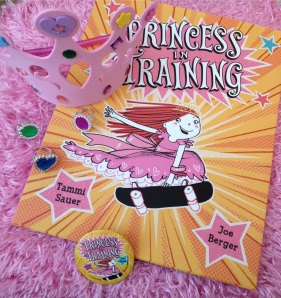
The winner of Tammi Sauer’s PRINCESS IN TRAINING Prize Pack is:
LORI ALEXANDER!
.
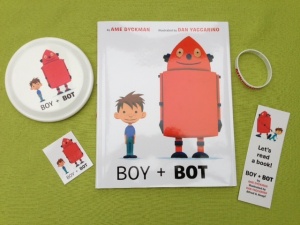
The winner of Ame Dyckman’s BOY + BOT signed book and SWAG is:
SUE PODUSKA!
.
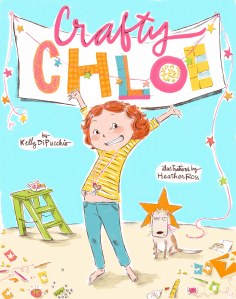
The winner of Kelly DiPucchio’s signed CRAFTY CHLOE is:
CAROL MUNRO!
.
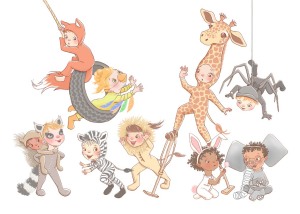
The winner of Kayla Skogh’s signed print is:
THIS KID ERIK!
.
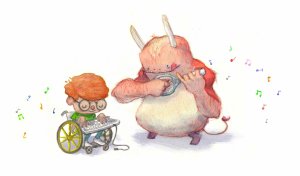
The winner of Peter Harren’s signed print is:
YONA WISEMAN!
.

The winner of Corey Rosen Schwartz’s rhyming picture book critique is:
MARY LIVINGSTON!
.
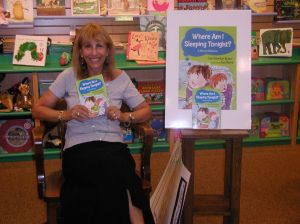
The winner of Carol Gordon Ekster’s picture book critique is:
GARY MASSKIN!
.
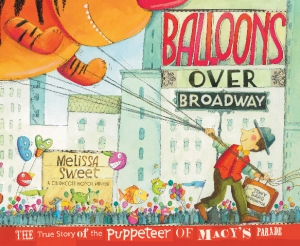
The winner of Melissa Sweet’s Prize Pack is:
DEBRA SHUMAKER!
.
Congratulations to all the winners!
I have to search the bottom of my stockings when I return from vacation—I might have a few more goodies to give away! I know, PiBoIdMo never ends!


Well, there sure are a ton of prizes to give out. My arms are dog-tired from holding all this stuff, so let’s begin the giveaways!
All winners will be contacted me via email for your postal address, so please scour your inbox for my message. If you don’t see a message by Wednesday, please let me know and I will resend.
Congratulations to all the winners! And remember, there’s more prizes to come…so stay tuned, picture book fans! Same book time, same book blog.
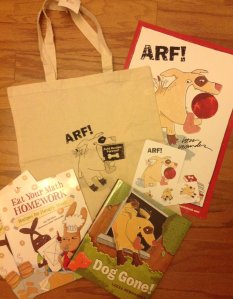
The winner of Leeza Hernandez’s DOG GONE! Prize Pack is:
TIM MCCANNA!
.
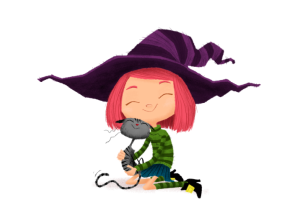
The winner of James Burks’ digital witch print is:
DEBRA FELDMAN!
.
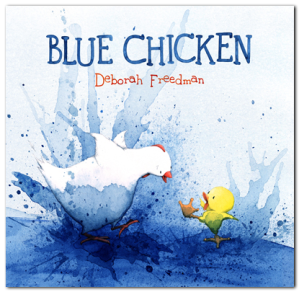
The winner of Deborah Freedman’s signed BLUE CHICKEN is:
JULIET CLARE BELL!
.
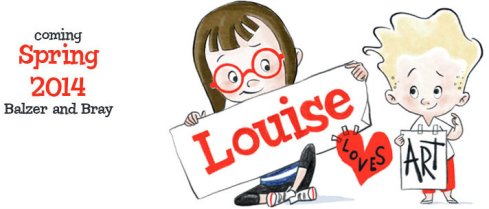
The winner of Kelly Light’s “Louise” sketch is:
SALLY PHILLIPS!
.

The winner of Carter Higgins’ picture book critique is:
LYNDA COWLES!
.
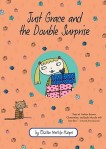
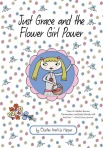
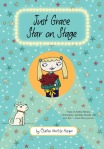
The winners of Charise Mericle Harper’s signed JUST GRACE books are:
CAT JONES, ASHLEY BOHMER & LYNN ANNE CAROL!
.
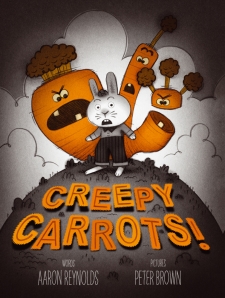
The winner of Aaron Reynolds’ signed CREEPY CARROTS is:
LAURA THIEMAN!
.
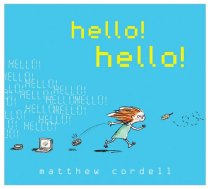
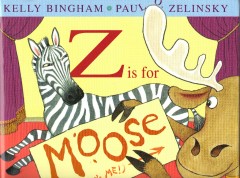
The winners of Mr. Schu’s book giveaways are:
ANISSA JONES & JANE JEFFRIES!
.
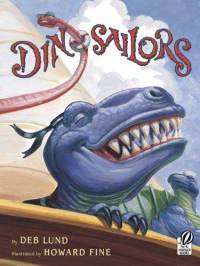
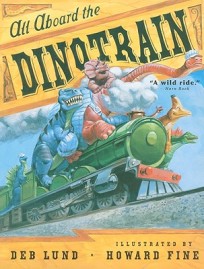
The winners of Deb Lund’s signed books are:
QUINN COLE & DIANA DELOSH!
.
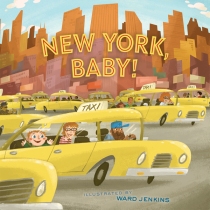
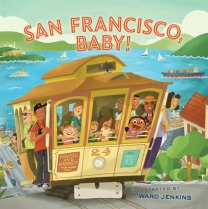
The winners of Ward Jenkins’ signed books are:
WESTLEY YOUNG & CINDY CORNWALL!
.
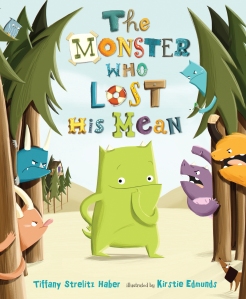
The winner of Tiffany Strelitz Haber’s signed THE MONSTER WHO LOST HIS MEAN is:
GENEVIEVE PETRILLO!
.
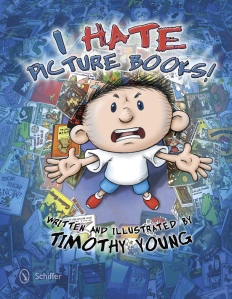
The winner of Timothy Young’s signed book of choice and pencil sketch is:
LAURA HAMOR!


The winner of Debbie Ohi’s cartoon caption contest is Catherine Bailey! (Hey, ’tis the season for Baileys, right?! Like George Bailey and Bailey’s Irish Cream…)
But be sure you’re not drinking Bailey’s while reading her winning entry—it’s spittake-worthy!
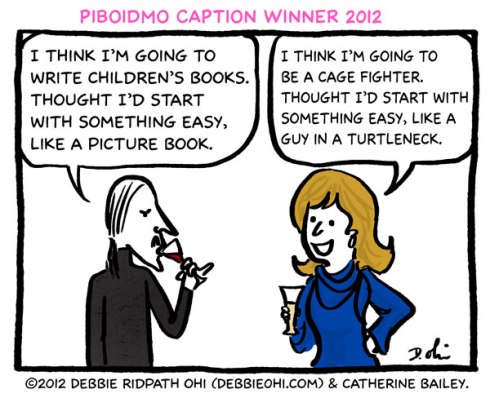
Catherine wins a signed copy of I’M BORED with an original doodle inside.
And the winner of the random prize—an original Debbie doodle—is Julie Rowan-Zoch! Be on the lookout for an email from Debbie.
Congratulations, ladies!
Now there’s tons more prizes to go, but I had a busy weekend. So stay tuned for more prize announcements coming tomorrow!


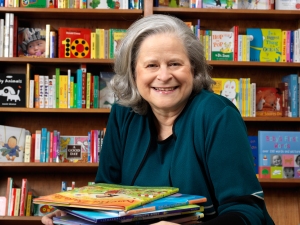 Earlier this week The New York Times published an article discussing how young Latino students are not seeing themselves in books frequently enough, and the obstacle many educators feel that omission puts in the path for enjoyment as well as for learning from books for these young children. The Cooperative Children’s Book Center at the University of Wisconsin-Madison of Education, which compiles statistics about the race of authors and characters in children’s books published each year, notes that in 2011 only 3 percent of the 3400 books reviewed were written by or about Latinos; this proportion is unchanged over the last decade. And yet, Hispanic students are one quarter of the nation’s public school enrollment.
Earlier this week The New York Times published an article discussing how young Latino students are not seeing themselves in books frequently enough, and the obstacle many educators feel that omission puts in the path for enjoyment as well as for learning from books for these young children. The Cooperative Children’s Book Center at the University of Wisconsin-Madison of Education, which compiles statistics about the race of authors and characters in children’s books published each year, notes that in 2011 only 3 percent of the 3400 books reviewed were written by or about Latinos; this proportion is unchanged over the last decade. And yet, Hispanic students are one quarter of the nation’s public school enrollment.
Several years ago Reading Is Fundamental (RIF) initiated our Multicultural Literacy Campaign, borne from our concern with the NAEP figures we were studying from years past and the distance with which African-American, HIspanic and American Indian children continued to perform behind their Asian and Caucasian peers. Our campaign is a multi-year effort designed in part to provide children the opportunity to explore and learn about their own culture and the culture of others, the “mirrors and windows with sliding glass doors” concept as articulated by Dr. Rudine Sims Bishop. One component of our effort is a yearly compilation of multicultural book sets through the generous sponsorship of Macy’s; these sets are distributed to more than 500 sites annually with the book lists and activities posted online for all to use.
RIF held the launch for the 2012 collection at the Library of Congress Young Readers’ Center with a panel made up of authors and illustrators whose books are featured in that “CELEBRATIONS” collection; the panel was chaired by Dr. Violet Harris, a literacy expert and chair of RIF’s Literature Advisory Board.
In her presentation, Dr. Harris set the context for the audience regarding the need for multicultural literature for all children, literature representing as many cultures as possible by discussing the work of Dr. Nancy Larrick, the second president (56-57) of the International Reading Association. Larrick is said to have noted the impetus for her oft-quoted study in the early 1960′s was when a five year old black girl asked her why all the children were white in the books she read. Her question came more than 20 years after Charlemae Rollins and others had begun a campaign for more positive examples of blacks and black culture in books for children. The lack of progress as well as that little girl’s sincere question compelled Dr. Larrick to investigate and produce the article “The All White World of Children’s Books” published in The Saturday Review of Books in 1965.
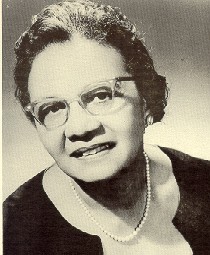 Rollins had published her groundbreaking We Build Together in 1948; this is a publication which “highlighted criteria for choosing books that portrayed Blacks realistically and built democratic attitudes among all people.” Rollins noted in her publication:
Rollins had published her groundbreaking We Build Together in 1948; this is a publication which “highlighted criteria for choosing books that portrayed Blacks realistically and built democratic attitudes among all people.” Rollins noted in her publication:
For many years books about Negro children followed a stereotyped pattern. The characters portrayed were the barefoot menial, or the red-lipped clown. Rarely did the Negro character in a story where there were other children ever take part in the story as equals. Illustrators, it seemed, could not resist presenting the quaint ‘pickaninny type’.
With regret we note today the change in children’s literature has not kept pace as many of us would have hoped. Similar statements can be made and are indeed written about the lack of inclusion of other cultures in children’s literature.
As Dr. Harris further noted ”…I want to emphasize…, it is a fight that goes on constantly. Each generation or even every couple of years it is two steps forward, one step back.” And further food for thought from Dr. Harris was her question to us: How can we say to the rest of the world that you need to model yourselves after us, our educational systems, our political systems, our economic systems and so forth, when we disenfranchise a significant portion of our citizenry?
You have finished a month of hard work producing ideas for picture books. As you move further into and with each idea, I challenge you to give very serious attention to the issue of children seeing themselves as well as having a window on the world. The book does not always need to be “about” diversity…perhaps it will be like HOW MANY SEEDS IN A PUMPKIN? by Margaret McNamara and illustrated by G. Brian Karas. The classroom shown through the illustrations is diverse, and I have actually heard children mention that diversity they can see in the book. The experience of seeing the diversity present in a book was new to them, but a common everyday experience in the school each attends.
We as a nation have much to do to prepare each child as fully as possible to read well. One element and one relevant to your work is to show we indeed as a nation value each child and celebrate each child; and part of that visible celebration must be that each child sees and reads about children “just like me.”
Book People Unite!
P. S. How can I post on this blog without giving a roaring round of applause to Tara for her sponsorship of PiBoIdMo as well as personally say ‘Thank You” to her and to all who have purchased from the PiBoIdMo store where the proceeds come to RIF. We are deeply appreciative!
.
 Carol H. Rasco is President and CEO of RIF. She joined RIF in 2001. Throughout her life, Carol has been a devoted advocate for children, youth, and families, as a professional and as a volunteer.
Carol H. Rasco is President and CEO of RIF. She joined RIF in 2001. Throughout her life, Carol has been a devoted advocate for children, youth, and families, as a professional and as a volunteer.
Prior to this position, Carol was the executive director for government relations at the College Board. From 1997 through 2000, Carol served as the senior adviser to U.S. Secretary of Education Richard W. Riley, and as director of the America Reads Challenge, a four-year national campaign to promote the importance of all children reading well and independently by the end of the 3rd grade. Previously, Carol worked for four years in the White House as domestic policy adviser to the president and directed the Domestic Policy Council.
Originally from Arkansas, Carol worked as the chief policy adviser in the Arkansas governor’s office for 10 years and also served as the liaison to the National Governors Association. Additionally, Carol has extensive experience as a volunteer for arts organizations and disability advocacy groups. Carol received her bachelor’s degree from the University of Arkansas and earned a master’s degree from the University of Central Arkansas. She has taught in the public school system and worked as a middle school counselor.
Carol serves on the Board of Trustees of Columbia College in Columbia, South Carolina. She is the mother of Hamp and Mary-Margaret, and the proud grandmother of William and Charlie Marks.


Another new piece for the portfolio. This is actually an idea I got while working on
PiBoIdMo last month. I'm thinking there's a story in this.
 So, you’ve finished PiBoIdMo, and now you have all these great ideas. You’re on the road to publication!
So, you’ve finished PiBoIdMo, and now you have all these great ideas. You’re on the road to publication!
Except, you still have to write the books. And that’s not an easy path.
A lot of people think that finding ideas is the hardest part of writing. It’s not. Finding ideas is very difficult, but figuring out which ideas to focus on first and which ones to let linger—that’s the killer. So that’s what I’ll try to help you with today.
Step 1: Get the easy stuff out of the way.
Some stories write themselves, or at least flow out of your mind effortlessly. Get those down on paper first—there’s no reason to not take the path of least resistance.
Step 2: Organize and analyze.
You’ve got 30 picture book ideas. Maybe more. Do you write manuscripts for them in alphabetical order? Chronologically? By order of the number of feet the main character has?
You could do any of those things, but it’s probably not the most efficient route to publication. So instead, I have a system. Here’s where I get nerdy.
You know that program called Excel that math people use but us creative types stay away from? Find it on your computer and start it up. We’re going to create a spreadsheet of ideas.
The idea here is to sort your ideas by various relevant characteristics to make sure you end up with a varied portfolio. After all, just like an illustrator has a style but needs more than paintings of bunnies to create a portfolio that will get him or her contracts, writers need to show range, too. You don’t want your own books to compete with each other —you want every book to have its own independent niche.
Column headings. The column headings will give you a way to list the relevant characteristics and sort your ideas using these.
Everyone may have different column headings, but here are some common ones that everyone should have:
- Title (Obviously)
- Character type (What kind of animal? How old of a human? Etc.)
- Theme
- Setting
- Problem type (Is it a monster? A bad teacher? A parent? A wild animal?)
- Age range (will this be a young PB or one for older kids?)
- Hook (I may actually separate this into sub-categories to make it easier to sort.)
- Institutional hook
- Holiday tie-in
- Developmental milestone
You can add any more headings that make sense to your work.
Create the spreadsheet. Now take all your PB ideas and start filling in the blanks. Now, you may not have a fully fleshed-out plan for each idea—that’s fine, just fill in as much as you can. And this is a place to do some research, too. Look at the market—are there hooks that are more popular than others?
Analyze your data. So you’ve entered your 30 ideas. Now we’re going to rank them.
You probably don’t want to write 16 books about pigs. It would be hard to get them all published before you establish a reputation. Same thing with 6 books about monsters or 3 books about pirates. So look at your spreadsheet and start seeing how you can sort the data.
If you’ve never used Excel, here is a quick tutorial: use the mouse to highlight all your data (not the column headings) and then click on Sort & Filter (in the Data tab of my version of Excel). You should then be able to sort by any of the columns. So if you sort by the column of Character Types (Column B in my spreadsheet) and sort on Values with the Order set to A to Z, all your entries will be rejiggered so you can see all your pig ideas next to each other and all your monster ideas will be next to each other.
Now look more closely at those similar ideas. Is there one that is particularly appealing? Stronger than the others? Incorporating more hooks? Move that to the top of the list. To create that varied portfolio, go through and pick only one idea from each “type” to work on first. When you notice ideas that seem too similar, delete one of them.
Step 3: Write!
I recommend getting a list of about 6 ideas to work on at a given time. Fewer than 6 and you may hit writer’s block, more than 6 and it is hard to keep everything straight. So keep looking at the ideas until you pull 6 good ones. Now you have a plan! From here, all you have to do is write a great manuscript, revise until it is perfect, market it until you find a home, wait for the illustrations, plan for the release, figure out promotions…well, that’s a post for a different day, isn’t it?
In the meantime, go figure out what to work on….
.
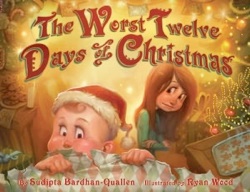 Sudipta Bardhan-Quallen is the award-winning author of many, many books for children, including picture books, nonfiction for young readers, and a forthcoming chapter book series called THE SPECTACLES OF DESTINY (due out in 2014). Her newest release is THE WORST TWELVE DAYS OF CHRISTMAS, illustrated by Ryan Wood. In this spirited reworking of the classic song “The Twelve Days of Christmas,” Joy has to deal with her first Christmas with a new baby brother—and nothing could be worse. A sweet surprise turns the tables on Joy, who eventually appreciates what her baby brother adds to the holiday.
Sudipta Bardhan-Quallen is the award-winning author of many, many books for children, including picture books, nonfiction for young readers, and a forthcoming chapter book series called THE SPECTACLES OF DESTINY (due out in 2014). Her newest release is THE WORST TWELVE DAYS OF CHRISTMAS, illustrated by Ryan Wood. In this spirited reworking of the classic song “The Twelve Days of Christmas,” Joy has to deal with her first Christmas with a new baby brother—and nothing could be worse. A sweet surprise turns the tables on Joy, who eventually appreciates what her baby brother adds to the holiday.
Sudipta speaks at conferences, educator events, and schools across the country, teaching the craft of writing to children and adults. She lives outside Philadelphia with her three children and an imaginary pony named Penny. Learn more about her and her books at www.sudipta.com.


Congratulations to the 444 PiBoIdMo participants who completed the 30-ideas-in-30-days challenge! (That’s about 59.2% of you!) You’ve soldiered through a month stuffed with superstorms, turkeys and Black Friday to emerge triumphant!
So the moment has arrived—the GRAND PRIZE WINNER announcement. Four lucky winners will be paired with a kidlit agent who will review your FIVE best picture book ideas. You are encouraged to write your five best ideas up like jacket copy or a marketing pitch, a short paragraph for each story. You will have until December 10th to do so, so get right on this!
You will receive an email from me with further instructions. If you do not receive this email by midnight tonight, please contact me and I will resend.
So without further ado…
.
Congratulations, CAROL BREEDLOVE!
You’ve been paired with Ammi-Joan Paquette of Erin Murphy Literary Agency.
.
Hooray for LISA SCHNELL!
You’ve been paired with Teresa Kietlinski Dikun of Prospect Agency.
.
Squee, SUE FRYE!
You’ve been paired with Susan Hawk of The Bent Agency.
.
Confetti and donuts, KATHY CORNELL BERMAN!
You’ve been paired with Marietta B. Zacker of Nancy Gallt Literary Agency.
.
If you didn’t win one of the grand prizes, don’t worry! There are more winners to be announced on December 9th and 10th, including all of the prizes announced during the daily guest posts. They include signed books, original art, and picture book critiques.
And remember, everyone’s a winner because you have at least 30 ideas—some of which will no doubt become manuscripts. Those manuscripts WILL land some of you agents and yet others publishing deals. So get ready for a fantastic year ahead! I am sure that 2013 will bring us more PiBoIdMo success stories than ever!
Once again, THANK YOU for participating. I couldn’t do this without the enthusiasm of the kidlit community. The camaraderie of this group continues on Facebook, so if you never joined our community there, do so today. We’ll continue to chat about ideas and picture book writing through to PiBoIdMo 2013!
Plus, we still have a couple more days of Post-PiBoIdMo…


 When I was a child, I had a reoccurring nightmare. I was on a field trip with my third grade class in a large grassy area with a huge tree in the middle. All the kids were following the teacher across the field and under the shade of the tree. I wasn’t a very popular child, and I was in the tail end of the line.
When I was a child, I had a reoccurring nightmare. I was on a field trip with my third grade class in a large grassy area with a huge tree in the middle. All the kids were following the teacher across the field and under the shade of the tree. I wasn’t a very popular child, and I was in the tail end of the line.
As I passed under the shadow of the tree, I noticed a large hole in its roots. At that moment a fierce bunny sprang out of the hole and grabbed me, pulling me down into the hole with it. I tried to call out but to my dismay my voice had gone silent.
Needless to say I woke up in tears and a cold sweat.
I still have dreams where I’ve lost my voice. Words fail me.
What a terrible place for a storyteller to find herself.
I’ve never considered myself a writer or a wordsmith. I do love words though. Their history, the way they sound, how when strung together in an organized fashion they can open up the universe to those who read them. So when I approach a picture book, I see pictures first. I write down what I see. Then comes the hard part of making the words sing. Because that’s what words in a picture book need to do.
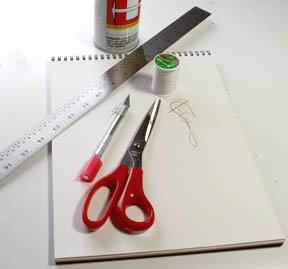 You’ve stuck it through November and have a list of 30 ideas. If you have lists like mine, most of the ideas are stinkers. I’ve been doing PiBoIdMo for more than a few years now, and I do see recurrent themes on my lists. Maybe you also have repetitive ideas on your list. No matter. We’re storytellers. Take those ideas and get visual!
You’ve stuck it through November and have a list of 30 ideas. If you have lists like mine, most of the ideas are stinkers. I’ve been doing PiBoIdMo for more than a few years now, and I do see recurrent themes on my lists. Maybe you also have repetitive ideas on your list. No matter. We’re storytellers. Take those ideas and get visual!
As an artist, I work on picture and text together, creating a dummy. Even if you aren’t a professional illustrator, you can use the framework of the dummy to really make your story shine. And your words sing.
For several years at #kidlitart, with my co-host Bonnie Adamson, we held the Picture Book Dummy Challenge. A lot of the people participating came directly from Tara’s PiBoIdMo. (#Kidlitart chat is on hiatus until Bonnie and I have more time to devote to it again. We’re both busy making lots of dummies!)
A picture book is a partnership of words and images. As word counts drop, the illustrations have to carry more of the story, and things like page turn in the text have to be concise.
This is where a dummy becomes a most excellent tool.
A dummy will tell you if:
- Your story is strong enough to carry through a 32-page book.
Since word counts have been dropping over the last decade to close to 500 and sometimes even less, it is hard to tell if you have a book on your hands (as opposed to a magazine story.) When a manuscript is laid out in a dummy you have visual clues to show you where your story needs more action, drama or dialogue.
- There are enough action scenes for 15-20 images.
An illustrator’s job is to take your manuscript and enhance the story you have written. If you only have a few scenes, this will be downright challenging. Think about your favorite picture books. Does the character move through time and space from the beginning of the book to the end? Or does the character stay in the same place for the length of the story? When a manuscript is laid out in a dummy you have visual clues to show you scene changes. There need to be scene changes.
- The page turns (or the breaks between action) are interesting enough to keep the reader moving to the next page.
In novels there are chapters. Usually the end of the chapter is written in such a way that you want to keep reading. There could be a cliffhanger or some sense of tension in that chapter end. Whatever it is, you feel compelled to get to the next chapter and find out what happens. You care what happens. You can’t wait to find out what happens. When a manuscript is laid in a dummy you get visual clues on your “chapter endings” to show if your page turns will propel the story forward.
- There is too much visual description in your text.
Five hundred words is not a lot to tell a story with a beginning, middle and end; to include a story arc and achieve character growth. The last thing you want to do is talk about red hair and green eyes, or blue sky and orange sunlight. Leave that to the illustrator. Save your words for things that can’t be seen. When a manuscript is laid out in dummy you get visual clues on your descriptions. Are you using precious word count to describe something seen?
All my books start as tiny scribbles. Even if you’re not an artist, you can scribble your ideas down, can’t you?
Here is the thumbnail layout for one of my books, RABBIT’S SONG by S.J. Tucker.
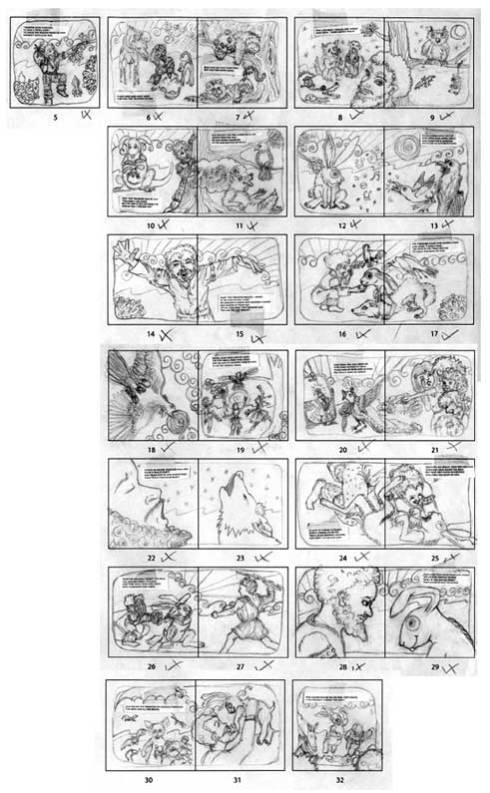
Once you have your scribbles down, you can make a little booklet. It never ceases to amaze me what a difference having a physical dummy makes in visualizing where your manuscript needs some attention.
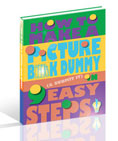 I’ll be giving a way a copy of my e-book “How to Make a Picture Book Dummy in 9 Easy Steps” to one lucky commenter. So let me know how you plan to take your 30 ideas and make them into amazing stories! A winner will be selected in one week. Good luck!
I’ll be giving a way a copy of my e-book “How to Make a Picture Book Dummy in 9 Easy Steps” to one lucky commenter. So let me know how you plan to take your 30 ideas and make them into amazing stories! A winner will be selected in one week. Good luck!
.
A transplanted New Yorker now living in Missouri, Wendy Martin has been working as an illustrator for 25+ years. She earned a degree in Fashion Design from the Fashion Institute of Technology, then continued her art education at the School of Visual Arts with a B.F.A. in Graphic Design. After her move to Missouri in 2000, she turned her focus to her true love, children’s books. AN ORDINARY GIRL, A MAGICAL CHILD, a children’s book she both wrote and illustrated, was released in 2005. The book was picked up by a new house, edited and re-released in 2008, then went on to become a finalist in the 2009 international COVR awards. Four additional picture books and a coloring book quickly followed. Visit her on the web at WendyMartinIllustration.com.


 There’s a little stinker that sneaks into my life sometimes and hangs out in the corner of my mind, stealing my creativity.
There’s a little stinker that sneaks into my life sometimes and hangs out in the corner of my mind, stealing my creativity.
And now that PiBoIdMo has provided amazing inspiration for finding fresh ideas and coaxing them into stories, I feel him lurking there again, trying to distract me from taking the next step.
He’s a clever thief and shape-shifter, and sometimes his name even changes.
On any given day, his name could be …errands, laundry, dishes, email, internet, TV, kid-activity-shuttle, homework monitor, gift buyer, holiday decorating, volunteering, car repair, home repair, toddlers, dinner, dog walking, Twitter, Facebook, Pinterest…
But the name that most people know him by is:

And if Procrastination is constantly lurking in the corners of your creative place too, I hope to help you block him out!
I think of Procrastination as my time thief. He poses as life’s daily minutia, unexpected interruptions and distractions, and the multitude of excuses that feel like they are “Must-Dos-Right-Now.” He will keep you from continuing on your story journey… if you let him.
The trick is…not to let him. But how? How do you fit consistent writing time into your daily life?
I’d like to pass along a few tips to keep your creative mojo fresh, and hopefully, Procrastination-free.
1. Attitude and Expectations
I once heard a wonderful author compare life’s interruptions to a game of “Whac-A-Mole.”
Great description! And as I thought about it, I discovered that I was waiting for a time in my life when those moles would keep to their hidey-holes, and provide me with some free time to write. But as Dr. Seuss says, The Waiting Place is “a most useless place.”
Once I tweaked my expectations and attitude about life’s craziness, I stopped making its ups and downs my excuse not to write. Decide to make time to write. You’ll be amazed at the joy it brings and how your stories start coming together in ways you never imagined.
2. Track Where Your Time Goes
This is an interesting experiment: For 2-3 days, keep a log of what you do. Jot it down every hour. Then examine where most of your time is going. Is it going towards something worthwhile? Is it something that you value or will be glad you did a year from now? Are there moments when you could let go of a little web surfing, Facebooking, volunteering, etc. to schedule some time to grow your stories?
3. Goals and Rewards
Writing a complete story can seem overwhelming, which is sure to make Procrastination come calling. Break it down by listing small goals to work towards each day.
- Today I’ll write about or draw possible characters. I’ll ask them questions.
- Tomorrow I’ll write or draw potential actions and obstacles.
- The next day I’ll play with fun word combinations, etc.
Once your daily writing goal is finished, your sense of accomplishment will be a real motivator! But you might consider a reward as well – your favorite recorded show, some Facebook time, chocolate, coffee…
I like to make a pact with myself that I cannot have my “reward” UNTIL I have finished my daily goal. For example, I am not going to eat that delicious snack-sized Snickers bar until I finish working on the next two stanzas of my rhyming picture book. I know it may sound a bit crazy or like I have “parenting issues” with myself. But it really does work for me. Try it – it might work for you too.
4. Schedule Writing Time
Take yourself seriously. You are a writer/ illustrator. Ask your family for the time and space you need to pursue your stories.
Then SCHEDULE time for your writing. Put it on the calendar and honor it like you would a doctor’s appointment. Turn off the email, internet, TV, and phone if possible.
Before my children were in school, I hired a babysitter once a week for a block of time, and went to Panera to write. It was a delicious, productive time—and my first book, THE GINGERBREAD MAN LOOSE IN THE SCHOOL, was written there. Panera holds a special place in my heart, as it was also the place where I received the email from GP Putnam’s Sons expressing interest in my story. Woo-Hoo!
But Panera also brings me to the 5th tip:
5. Go Somewhere Else to Write
If I am not making progress on my stories, it is usually a sign that I need to get away from all the little things that Procrastination tempts me to do. He rarely follows me into that corner booth of a coffee house, if all I bring with me are my ideas, a notebook, and my favorite writing pen.
I’ll leave you with a quote from From the Mixed up Files of Mrs. Basil E. Frankweiler by E.L. Konigsburg:
“Ideas drift like clouds in an undecided breeze,
taking first this direction and then that.”
Help your lovely, drifting ideas tell you which direction they’re going, by giving them the time they deserve (and not letting that sneaky thief whisk it away.
And speaking of thievery, I couldn’t help but “borrow” this cartoon from Facebook for my office cork board. It makes me laugh each time I look at it, but it’s also a good reminder.
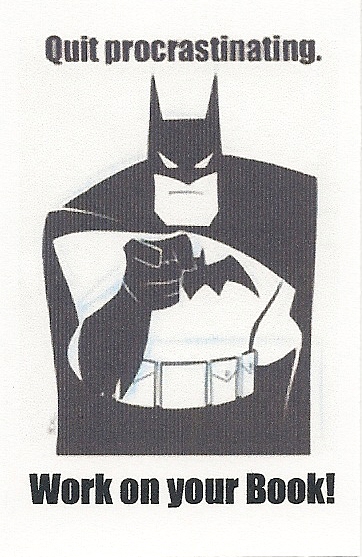
.
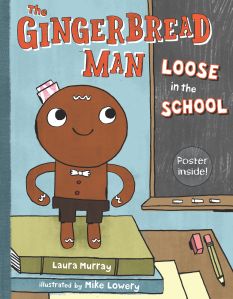 Laura Murray is a children’s author, former teacher, and mom of three mischief makers. Her rhyming picture book, THE GINGERBREAD MAN LOOSE IN THE SCHOOL (GP Putnam’s Sons, July 2011), received a starred ALA Booklist review, was chosen as Washington State, Florida, and Kentucky Children’s Choice Book Award Nominee, and has inspired a forthcoming sequel entitled THE GINGERBREAD MAN LOOSE ON THE FIRE TRUCK! (GP Putnam’s Sons, July 2013). She loves writing picture books with funny, mischievous characters, and middle grade adventure/mysteries. Please visit her online for printables and teacher’s guides at LauraMurrayBooks.com.
Laura Murray is a children’s author, former teacher, and mom of three mischief makers. Her rhyming picture book, THE GINGERBREAD MAN LOOSE IN THE SCHOOL (GP Putnam’s Sons, July 2011), received a starred ALA Booklist review, was chosen as Washington State, Florida, and Kentucky Children’s Choice Book Award Nominee, and has inspired a forthcoming sequel entitled THE GINGERBREAD MAN LOOSE ON THE FIRE TRUCK! (GP Putnam’s Sons, July 2013). She loves writing picture books with funny, mischievous characters, and middle grade adventure/mysteries. Please visit her online for printables and teacher’s guides at LauraMurrayBooks.com.
Check out the new Video Book Trailer of THE GINGERBREAD MAN LOOSE IN THE SCHOOL, made by the fabulous PiBoIdMo-er, Carter Higgins.
Laura got the opportunity to meet Mike Lowery, the book’s awesome illustrator, and have him sign a few copies of THE GINGERBREAD MAN LOOSE IN THE SCHOOL after its release. Please leave a comment to win a first edition (includes a poster) signed by both the author and the illustrator, as well as some fun Gingerbread Man SWAG! A winner will be selected in one week. Good luck!


Five…four…three…two…one…
Happy New Month!
And you know what that means, right? November’s over. (Already? Geesh, where did the month go? Oh yeah, I did spend some time in a blackout.)
So, do you have 30 new picture book ideas?
You do? Well, you beat me to it. That’s one of my well-kept PiBo secrets—I’ve yet to complete the challenge myself! (Did I mention a blackout?)
But YOU—I KNOW you did it!
You can qualify for one of our AMAZING prizes just by taking the following pledge:
I do solemnly swear that I have faithfully executed
the PiBoIdMo 30-ideas-in-30-days challenge,
and will, to the best of my ability,
parlay my ideas into picture book manuscripts.
Now I’m not saying all 30 ideas have to be good. Some may just be titles, some may be character quirks. Some may be problems and some may create problems when you sit down to write. Some may be high-concept and some barely a concept. But…they’re yours, all yours! Give them a big, fat, juicy smacker! SMOOCH!
You have until December 5th at 11:59:59PM EST to sign the pledge by leaving a comment on this post.
Remember, this is an honor system pledge.You don’t have to send in your ideas to prove you’ve got 30 of them. If you say so, I’ll believe you! Honestly, it’s that simple. (Wouldn’t it be nice if real life were that straightforward.)
If your name appears on both the registration post AND this winner’s pledge, you’ll be entered into the grand prize drawing: feedback on your best 5 ideas from a literary agent. There are four grand prizes! Thanks to Ammi-Joan Paquette of Erin Murphy Literary Agency, Teresa Kietlinki Dikun of Prospect Agency, Marietta B. Zacker of Nancy Gallt Literary Agency and Susan Hawk of The Bent Agency for volunteering their time and talent to PiBoIdMo.
Other prizes include picture books, manuscript critiques, original art, jewelry, plus all the stuff you saw during the month. All winners will be randomly selected by Random.org and announced on December 9th.
And guess what, PiBoIdMo doesn’t end here! From now until December 8th, stop in for daily posts about how to organize and flesh out your ideas. We’ll even teach you how to make a picture book dummy!
Plus—you can claim your first prize now: a winner badge for your website, blog or social media site, designed by Ward Jenkins. You can make it larger or smaller to fit anywhere. And if you want it on a mug, don’t forget to stop by the PiBoIdMo shop where every purchase benefits Reading is Fundamental (RIF).
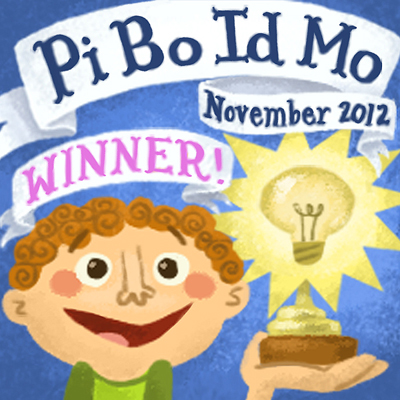
So start signing the pledge and patting yourself on the back for a job well done.
And if you can do both at the same time, that’s even more impressive!


 I’ve often heard people—Publishing Professionals—talk about wanting to “publish books that stand the test of time.”
I’ve often heard people—Publishing Professionals—talk about wanting to “publish books that stand the test of time.”
There’s something unnerving about the way the phrase is used. As though it were written into their code, rather than contemplated carefully and reevaluated case by case. It’s a slogan, rather than a creed. And there’s a reason for that.
While it sounds good to be the publisher known for publishing books that “stand the test of time,” publishing is a business. And in order to be successful, units need to be moved. Not books. Units. Units do not stand the test of time.
Now, it’s true, publishing professionals often come to their jobs with a love of books. And for that reason, they often sell books in spite of their better judgment. They sell them out of love. Sometimes the PP will wake clear-eyed at a meeting a year later, looking at some abominably small number in a column and wonder what they ever saw in that silly little volume.
But sometimes that love will win the day and that number will not be small. It will be large. If it is large the first year, it will, perhaps, continue to be large the second year (this is often the case with the books that are loved very well). In fact, it will sell year after year. And we will, indeed, end up with a book that stands the test of time.
Friends, this is where you come in. When you look at a bestseller list of picture books, you are often—not always—looking at a list of units. When you look at shelves of sparkly pink princesses and less sparkly dumptrucks, you are looking at units. So, as you are making lists of ideas, I want you to consider the following five point entreaty:
- Don’ t pull your ideas from the bestseller list. Pull them from your soul. What combination of experiences, relationships and ideas has come together to make your thoughts what they are? This is the same equation that should make your book. Don’t try to insert some new variable derived from market research.
- Don’t follow the rules. At least, don’t follow them just *because* they are the rules. Use them as guidelines. Mitigate them thoughtfully with your own point of view.
- Your structure is a springboard. If you are using a traditional structure, of the kind that Tammi Sauer recommends in this post, great! But don’t use it as a fetter, let it be the springy energy beneath your feet (or keyboard, as it were).
- Don’t be afraid to steal. But if you’re going to steal an idea, make it good. Pay tribute to something that you’ve been in love with for some time and can’t seem to forget. Don’t riff on something because it’s marketable. Do it because it’s good and you love it.
- Be giddy. You know those ideas that are so good you can’t believe that they came from your brain? The ones that make you do a little dance and clap your hands with glee? Those are books. Use them.
There are a lot of wonderfully quirky picture books that are having their day out there. And you can bet that these books are not a result of market research. They are a result of love.
Tamson Weston is a published children’s book author, founder of Tamson Weston Books, and an editor with over 15 years experience. She has worked on many acclaimed and award-winning books for children of all ages. When she doesn’t have her nose in a book, Tamson likes to run, bike, swim, lift heavy things and, most of all, hang out with her family in Brooklyn, NY. Visit her online at www.tamsonweston.com.


When Tara launched this party, she quoted the fantastic Mr. Dahl:
And above all,
watch with glittering eyes
the whole world around you
because the greatest secrets
are always hidden
in the most unlikely places.
Those who don’t believe in magic
will never find it.
That’s just plain inspiring, no?
Well. Here’s my favorite sentence that man said, from THE BFG:

But let’s ignore that sage advice and gobblefunk a bit. That pretty much sums up what we do as writers anyway, right? Stir this, mix that, add in this word, trash those dumb ones, those unneccessary ones, those boring ones.
I’m always (always!) noodling around words in my brain. Odd I know, especially because my day job is all about pictures and graphics and effects. So at work recently, one dude asks the Boss Man, “Boss Man, what shot number is the one with the volcano?”
Too easy. I pipe up with, “Probably number e-LAVA-n.”
Maybe that was a bit of a groaner, or even a lot of a groaner if you have no funny bone. But since you are on the other side of the internet, and because I know we are all best friends, I have a feeling you laughed a little.
Did I write down “Punny Counting Book about Earth Science-y Things” in my PiBoIdMo notebook that day? Maybe.
(My honey’s fantasy football team is called the Favre Fig Newtons. Runs in the family.)
I figure if you look at the world like it’s one monster crossword puzzle, something unexpected is bound to tumble out.
Gobblefunked.
And why limit the gobblefunking to words? Why not gobblefunk with pictures?
I’m really no different than your average preschooler, because all day long I think about shapes and lines and color.
It’s when this:

Becomes this:

Which could easily become this:

OK, well maybe that’s boring unless you are in my line of work. But!
Couldn’t that same gobblefunking help us with ideas?
And since words are just pictures in different shapes, let’s do some of those, too.
This is the high school football stadium up the road from me. I am obsessed with their signage. It’s strong and pretty, and it sparkles on Friday nights. I can’t explain my love for this tiny part of my town, I’m just drawn to it. (I secretly think Tami Taylor is in those bleachers, which may explain part of the love.)

So, switch around some letters, fire up the gobblefunking, and the leftovers might just be a flash of an idea.

Gobblefunked.
Every day when I leave my house, these are the stepping stones I hop.

I hate them. They are awkwardly spaced, so in order to avoid the dewy grass I have to mosey with some serious cowboy swagger to land on each one. But remember that whole thing about being like a preschooler and thinking of shapes all day?
Maybe instead of stone circles they are actually…

Gobblefunked.
Or this:

All I see is a pet rock factory. Or a cement skyscraper. You?
This will be the only time I ask you to listen to me and not Roald Dahl. But go ahead and ignore that advice above, and get busy gobblefunking.
 Carter Higgins is a motion graphics designer and a former elementary school librarian. She spends her days creating graphics, teaching, gobblefunking, and writing picture books. All of these interests combine in her blog at Design of the Picture Book, or you can find her on Twitter @CarterHiggins.
Carter Higgins is a motion graphics designer and a former elementary school librarian. She spends her days creating graphics, teaching, gobblefunking, and writing picture books. All of these interests combine in her blog at Design of the Picture Book, or you can find her on Twitter @CarterHiggins.
Carter is generously donating a picture book critique to PiBoIdMo. And you don’t have to wait until the end of the month to win it! Anyone can enter, right here, right now. Just leave a comment and a winner will be randomly selected in one week. Good luck!


 People who aren’t directly involved in the publishing industry ask me where I get my ideas from all the time. I’m always tempted to respond with something like, “I steal them from first graders” or “I ask my Ouija board.” I think everyone reading this post knows that ideas come from absolutely everywhere and anything. From the mundane to the downright bizarre, everything is fair game. Consequently, writers are perpetual treasure hunters, the black crows of society.
People who aren’t directly involved in the publishing industry ask me where I get my ideas from all the time. I’m always tempted to respond with something like, “I steal them from first graders” or “I ask my Ouija board.” I think everyone reading this post knows that ideas come from absolutely everywhere and anything. From the mundane to the downright bizarre, everything is fair game. Consequently, writers are perpetual treasure hunters, the black crows of society.
Most writers I talk to can trace their treasure hunting days back to childhood. Once a seeker, always a seeker. When I was a kid, I had a secret drawer in my dresser where I hid my eclectic collection of treasures. It included things like my favorite Bonnie Bell Lip Smackers, sea glass, a cool cat’s eye marble, miniature Hello Kitty colored pencils, and a tiny box of Worry Dolls. There was no rhyme or reason to what I declared a treasure. They were just random objects that evoked feelings in me that really couldn’t be put into words. And for that reason, they were special.
If we’re really being honest with ourselves we know when our stories are rooted in something deeper than just a good idea. There’s an invisible connection to some intangible variable that we can’t always put our finger on. Love? Passion? Truth? Whatever it is, when it’s there, you know it. And for that reason, those stories are special.
While I believe that treasure hunting out in nature or out in the real world is infinitely more inspiring than virtual treasure hunting on the internet, physical expeditions aren’t always possible. So here’s what you do: Head over to Etsy, eBay, YouTube, Pinterest, Zappos—wherever your web weakness might be—and look for things you really love or really hate. You can pretty much find a story seed in anything that makes you ridiculously happy or sad. How do I know this treasure hunting exercise actually works? Meet French Bulldog Puppy Can’t Roll Over.
.
Holy cute, right?!
When I watched that video clip about two years ago, I wanted to reach into the computer screen and put that little hunk of sugar in my pocket. I was so punch drunk on puppy love I wrote a story about a French bulldog named Gaston. Just so we’re clear, GASTON isn’t a picture book about a dog that can’t roll over. Thirty-two pages featuring a beached dog may not be as endearing or as entertaining in print as it is on film. However, what YouTube puppy did do was inspire a new character and that character was very eager to tell me his story. The manuscript, which took several weeks to complete, sold to the first editor who read it. Christian Robinson is illustrating. The book will be published by Atheneum/Simon & Schuster next year.
So that’s my advice on Day 12, PiBo people. Go treasure hunting and find the shiny things that make you swoon, swear, sigh, or smile.
If you’re still stuck after that, go talk to a first grader.
 Kelly DiPucchio is the award-winning author of fourteen children’s books, including New York Times bestsellers, GRACE FOR PRESIDENT, and THE SANDWICH SWAP, a book co-authored for Her Majesty Queen Rania Al Abdullah of Jordan. Kelly’s books have appeared on The Oprah Show, Good Morning America, and The View. Kelly’s new picture book, CRAFTY CHLOE, illustrated by Heather Ross, (Atheneum) received a starred review in Kirkus and was featured on The Martha Stewart Show. Visit Kelly at www.kellydipucchio.com, or follow her on Twitter @kellydipucchio.
Kelly DiPucchio is the award-winning author of fourteen children’s books, including New York Times bestsellers, GRACE FOR PRESIDENT, and THE SANDWICH SWAP, a book co-authored for Her Majesty Queen Rania Al Abdullah of Jordan. Kelly’s books have appeared on The Oprah Show, Good Morning America, and The View. Kelly’s new picture book, CRAFTY CHLOE, illustrated by Heather Ross, (Atheneum) received a starred review in Kirkus and was featured on The Martha Stewart Show. Visit Kelly at www.kellydipucchio.com, or follow her on Twitter @kellydipucchio.
Hey, crafty writers! Kelly is generously donating a picture book critique to a lucky PiBoIdMo’er who completes the 30-ideas-in-30-days challenge. Leave a comment here…and if you also end the month with 30 ideas and take the PiBo-Pledge (posted for you to sign in early December), you’ll be entered to win. Good luck!


 Dear fellow PiBoIdMoers: my brave and beautiful sisters & brothers!
Dear fellow PiBoIdMoers: my brave and beautiful sisters & brothers!
I’m going to keep this short and—hopefully!—sweet.
Several years ago, I was sitting in the far-too-messy front room of my apartment, glaring down at the notebook on my lap, pages blank as Antarctica.
There was a very specific theme I was trying to write—NOT because it had been handed to me, gift-wrapped, by a Muse with ivory wings. No. This theme had arrived like a toddler with a pan and a wooden spoon: having plopped itself down on the kitchen floor, it was going to beat its makeshift drum—CLANG! CLANG! CLANG!—until it damn well felt like stopping.
Furthermore, the theme had told me—in no uncertain terms—that it was going to be a picture book… and not a shoddy one, either. There would be a proper story arc, with a beginning, middle, and end; there would be believable characters, and it would all take place in an interesting setting. And the finished product had to appeal to actual children, not some fusty adult idea of same.
Oh, and did I mention that the theme of the book was transgender identity? You know, something EASY. Total Berenstain Bears territory…
So: me, blank page, glares. A pitiless, pot-banging toddler. A zillion different ideas and approaches in mind, all of them lame, all of them contradictory.
CLANG! CLANG! CLANG!

Finally, using a tactic that I don’t recommend, I bullied myself into the job at hand: I took a stab at the first few paragraphs. What came out was the story of a girl coming to terms with the transition of her beloved uncle to a female identity. And it was TERRIBLE.
Even as I wrote, I could picture the heavy, plodding illustrations that would accompany this heavy, plodding tale: ‘Here are a bunch of clunky, poorly-drawn children arriving at school! Now they’re hanging their coats up! Now they’re putting their lunch-bags away! Now it’s recess time, and the blocky kids hang off monkey bars! Now it’s carpool time—what a long line of station wagons!’ …I was starting to nod off, literally.
But then—thank GOD—something else kicked in. It was like being shook by the shoulders. Some inner voice (a grown-up version of the toddler-with-the-pot?) had decided to be all frank and no-nonsense with me. And this is what it said:
“Oh, Marcus, COME ON! Get real here! You don’t give a DAMN about this boring girl, her dreary uncle, or any of her ‘After-School Special’ life. NO. What you want to write about—since you can write about ANYTHING IN THE WORLD—is dresses. Magical dresses: a dress made of real gold; a dress made of CHOCOLATE!”
At last, the real me was starting to participate. “What about a dress made of crystals?” I asked. “And whenever light hits it, it would flash rainbows, like a prism?”
“Now you’re talking!”
“Or a dress made out of FLOWERS?” I said. “Actual living flowers? The skirt would be roses, and, uh, lilies… and the sleeves could made out of honeysuckle vines! The little girl wearing the dress could pluck honeysuckles right off her sleeves, to taste the honey – just like I used to do, in Georgia!”
“See? Now you’re bringing your own life into the story. That’s so much better…”
“Or what about a dress made of windows?” I said, interrupting. “Magical windows that would show you things like the Great Wall of China, or the Pyramids?”
And so on.
You see? Everything had changed. Now my story had a spine—a series of marvelous dresses—and at last I had a character I actually cared about: the little girl who could dream up such luminous creations.
And of course SHE would be the one—not some hazy uncle—with the soul-deep knowledge of her own true gender, the one that didn’t line up with others’ expectations.

And that’s how my book 10,000 Dresses came to be, and Bailey, its courageous heroine…
My dear fellow PiBoIdMoers, my brave and beautiful sisters & brothers!
Here are my two pieces of advice:
- Notice which ideas put you to sleep with boredom.
- And, when in doubt, SEIZE THE DRESSES!
Marcus Ewert wrote the children’s book 10,000 Dresses (Seven Stories Press, 2008; illustrations by Rex Ray). The first book of its kind, 10,000 Dresses has received wide critical acclaim, awards and honors from the American Library Association, and has become a staple of anti-bullying curricula throughout North America. It’s also been banned a few times!
Marcus is hard at work on several other picture books as well. Did you know that eclairs can come to life and fight crime?


 In 2009, I was humming the rejection blues when I spotted Tara’s post on Verla Kay’s Blueboards. PiBoIdMo sounded like just the sort of creative kick in the pants that I needed. And boy, am I glad I took up the challenge, because it started an exciting chain of events.
In 2009, I was humming the rejection blues when I spotted Tara’s post on Verla Kay’s Blueboards. PiBoIdMo sounded like just the sort of creative kick in the pants that I needed. And boy, am I glad I took up the challenge, because it started an exciting chain of events.
One of my ideas led to a picture book manuscript for which I was awarded the SCBWI Barbara Karlin Grant in 2010. I’m normally a pretty shy person, but after that, I would often catch myself singing “Zippity doo-da…” in public (much to the dismay of anyone within earshot).
When I emailed Tara to thank her, she invited me to share my story. Another exciting moment! And now, a few years and many revisions later, here I am with a sing-out-loud-worthy update. After signing with Brianne Johnson of Writers House, GRIMELDA, THE VERY MESSY WITCH—the manuscript I based on a 2009 PiBoIdMo idea—sold in a two-book deal to Katherine Tegen Books/HarperCollins. Plus, another manuscript, NED THE KNITTING PIRATE: A SALTY YARN, sold to Roaring Brook Press/Macmillan. Both are scheduled to be released in 2014. I hope my neighbors have industrial-strength ear plugs.
Speaking of singing, here’s a bit of inspiration to help you begin your own exciting chain of events.
If you’ve ever watched Glee, you’re probably familiar with the concept of the “mash-up”. This is when you take two different songs and smash them together to produce something new.
.
Bon Jovi and Usher? Who knew that could work?
And it can work with writing as well. The great thing about mash-ups is that they can give your story an immediate sense of conflict. And when you mix concepts that don’t normally go together, you can potentially create something unexpected and fresh. You can also create something really weird, like “Trucks at the Ballet” or “Pet Rock for President!”. But remember, one person’s weird is another person’s unique, funny, and/or intriguing. It’s all about execution (well, and also personal preference). In order to nail the execution, it helps if the idea is something you relate to. Something you connect with on a personal level. That will give you the passion you need to see it through.
By the way, when I posted on Tara’s blog in 2010, I mentioned one of my “bad” ideas about a do-everything hat. I believe it was called “Mabel’s Amazing Hat”. Well, I ended up giving that idea a sporty twist. The new title is “Automatic Baseball Hat” and I recently sold it as a poem to Highlights magazine. So you can even make your bad ideas work for you! And I’m not so sure there’s such a thing as a bad idea at all.
Now get out there and mash it up!
Diana Murray is a picture book author and poet represented by Brianne Johnson at Writers House. She lives in New York City with her husband, two very messy children, and a goldfish named Pickle. For more information, visit her website or follow her on Twitter @DianaMWrites.


 “This person has no business being in children’s books.”
“This person has no business being in children’s books.”
Read that again.
Imagine it being said in front of a crowd of over a hundred of your peers and various industry editors and art directors… at the NY SCBWI conference.
Your work is up in front of a big auditorium on a video screen with a panel with loud microphones when these words are spoken…
Imagine that person that it was said about was YOU.
DON”T WORRY! It wasn’t.
It was ME.
In 2009.
Yes. An art director declared me as a person who has NO BUSINESS being in children’s books … in front of the entire world of children’s books.
It felt worse than the worst college art critique I could have ever imagined. I was a grown woman. I had already had a hot career as a hot shot in cartoon merchandise. I shrunk in my seat. I wanted to run out of the room. My heart pounded.
I went home that night on the train back to Long Island… and cried. Crying on The Long Island Rail Road is like visiting Dante’s bonus level of hell. Those words echoing in my head…
The Art Director who said it—we shall call: “The A.D. WHO SHALL NOT BE NAMED”—but that name was burned into my mind. Branded onto my frontal lobe. I went home to google the crap out of this person. Bleary and blood-shot-eyed hours later…I knew everything they had ever worked on. I was sure some day… I’d encounter this A.D…

Now, I wasn’t automatically like Scarlet O’Hara shaking my fist in the air against the sunset vowing that “Tomorrow is another day!” No… I hit rock bottom. I questioned it all. Why? Why children’s books? Was I nuts to think I was good enough? Was I certifiably insane to think that I had the talent and ideas and stories to share with kids?
I went down, down, down into a pit of self doubt. I spent the good part of the next six months doing nothing. Hanging on to those words for a good long while…. but…
You just can’t keep a good pencil down… so eventually, I found myself, drawing myself out of that hole. I drew for myself. I made all kinds of silly art. Whatever I wanted to draw and paint, I made. I allowed myself to indulge in my imaginative whims. Whatever floated my boat, floated out of my pencil. This was new. The feeling of having nothing to lose, so why not? I was no longer thinking about what I thought the publishing industry wanted to see. I was drawing what I wanted to see for myself. I told myself stories as I drew. I wrote them down in messy notebooks.
Funny thing about this… I liked what I was drawing. So, I put it into my portfolio.
Then I had two important people enter my life. One a successful illustrator, who told me I WAS good. The other, my first agent. Who—obviously thought I was good enough to sign. That was the first time I thought of The A.D. Who Must Not be Named… and thought “…one day…you are gonna eat your words…!”
A year went by. I showed my portfolio a lot. The more I showed it—the better I got at reading the reviewer’s body language and interpreting the feedback. I listened at critiques but I chewed up the feedback and spit out what did not taste right.
I started to trust my own vision. The vision of what I wanted to do and who I wanted to be as an illustrator and maybe just maybe, a writer too.
I got my first books as an illustrator. One was a novelty book and some early readers. They were for small publishers and I found the work to be not what I wanted for myself. I wanted a picture book with a big publisher.

I went back to the 2011 SCBWI NY Winter Conference. I entered a piece in the art showcase and won an honor award. I got up on the same stage where “A.D. Gate “ went down and got hugs and recognition. Talk about a weird moment. I thought of that Art Director then… and those words. This time—those words felt like a dare.
“Oh yeah, A.D. Who Must Not be Named? I have no business in children’s books? You just watch me…” I was hoping that person would be there. I found out who was on the jury for the show. (The Art Director Who Must Not Be Named was not one of them.) I decided to find each one of the judges and meet them.
I did that for the next six months. I was like a bounty hunter. I crossed each one of the judges of a list as I met them. I made some amazing connections. I got my all of my work and myself in front of the eyes that already had a good feeling about what I do.
Some time went by. I did a lot of work on story ideas and characters. Still no bites from big publishers… so I did something way out of my comfort zone. I applied to give a character design workshop at the NE SCBWI Spring 2012 conference. While I was there… I got my first offer.
Donna Mark, Art Director at Bloomsbury wanted me to illustrate a middle grade chapter book called “The Quirks – Welcome to Normal”.


Take that Art Director Who Must Not be named.
Then I got a call from Alison Donalty, Art Director ay Balzer and Bray, and imprint at Harper Collins. Another middle grade chapter book.


Those words from The A.D. Who Must Not be Named were barely audible any longer. Now I HAD business in children’s books!
Next—an un-ending amount of calls about a character on a postcard that I mailed out… all from Art Directors and Agents from all of the major publishing houses…
My first picture book as author/illustrator will be from Balzer and Bray as well , “Louise Loves Art”.

Those words in my head? Silenced.
“Who were you again? Oh, an art director? Oh yeah… that one who said something cruel…I think I remember your name… wait… I may have to google you…”
TWO more picture books with Harper Collins.
You, A.D. Who Must Not Be Named, have been (almost entirely) wiped from my memory.
You see, it’s kind of fabulous to have revenge—validation—someone to point to as a huge road block that I decided to drive through. I defied his label of me because only I can define myself. Don’t tell me I can’t – cause I will show you – not just that I can- but I will—and I will do it big.
Maybe… just maybe… I should be a tad grateful. That person forced me to grow. They could have been a hell of a lot more tactful in their choice of words in front of all of those people!!!! BUT—they don’t call these things “growing pains” for nothing….
I want everyone to take away from this, REJECTION is not a done deal. Critiques are not the end of the world. Public humiliation is tough—but if you know yourself—you can shed it. IF you hold on to who you are and what you do that is uniquely you and do it to the best of your ability. Do not stop! Keep getting better through the work. Follow your own heart—your own head—the beat of your own drum. Show those people in publishing—YOU are here.
These days, I am contacted, happily, by many art directors.
Last week, The A.D. Who Must Not Be Named contacted me. “Just wanted to drop a line to say that I love your work.”
One day—I will shake that hand and be gracious—cause that is what professionals do, but in my head… I will hear… BAZINGA!!!!
Kelly Light’s pencil is sharpened and she’s not afraid to use it.. She is currently working hard on her first three books. All due out Spring 2014: ,THE QUIRKS – WELCOME TO NORMAL, written by Erin Soderberg (Bloomsbury), ELVIS AND THE UNDERDOGS, written by Jenny Lee (Balzer and Bray), LOUISE LOVES ART, by Kelly Light (Balzer and Bray). Spring 2015 brings LOLA KNOWS A LOT, by Jenna McCarthy (Harper Collins).
Kelly lives in Long Island and currently has power!! She is right now, drawing in her attic studio surrounded by old radios, books, cartoon collectibles and is usually singing very loudly. Head over to Kelly’s website and read her blog all the way back to 2009 and maybe you can figure out who The Art Director Who Must Not Be Named is! Sketch along with her on Twitter @kellylight.

I love Kelly’s art, and Louise loves art period, and now you can love both Kelly *and* Louise because you can win a Louise sketch by Kelly! Just comment on this post to enter (one comment per person). A winner will be randomly selected one week from today. Good luck!


 I’m lucky to be good friends with several very important book reviewers.
I’m lucky to be good friends with several very important book reviewers.
Like my neighbor, Ashley.
At 3:47 PM each Monday through Friday, as we wait at the bus stop for the big kids to come home, six-year-old Ashley recounts the books read aloud in her first grade classroom that day.
Don’t let the pigtails fool you. You thought Kirkus was tough? You haven’t heard Ashley.
But last month, Ashley bestowed her first starred review:
“It-was-an-old-book-about-a-monkey-who-was-eating-spaghetti-and-the-monkey’s-friend-wanted-to-play-with-her-but-the-monkey-didn’t-wanna-play-because-she-was-eating-spaghetti!”
“And it was really, really good!”
My mouth hung open.
I knew that book.
I loved that book—back when I had pigtails.
Thumbs clumsy with excitement, I fumbled my way through an Alibris search on my phone.
“That’s it!” said Ashley. “Order it!”
I did. And the waiting (and whining) began.
For days, cries of “But why isn’t it here yet?” echoed around our neighborhood.
“Be patient,” said Ashley.
“No,” I pouted.
But finally, the package arrived.
I ran to the bus stop.
I tore open the padded mailer.
And there it was:
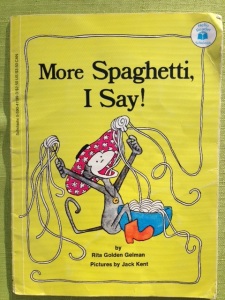
MORE SPAGHETTI, I SAY! by Rita Golden Gelman, illustrated by Jack Kent (Scholastic, 1977).
“Read!” commanded Ashley.
We plunked down on the curb. I opened the cover—and two wires in my brain connected.
It had been *mumble mumble mumble* years since I’d held a copy of this book, but suddenly, I remembered the words before I read them.
I remembered the pictures before I saw them.
And I remembered how they worked together.
Humor. Friendship. Rhythm. Repetition. Brevity. The power of the page turn. The fun satisfaction of a mirror story.
All the elements I try to use in my own writing.
And this was one of the places I’d learned it first.
“Wow,” I whispered.
I couldn’t wait to write that night.
Ashley smiled. “Told you it was good,” she said.
So, awesome writers, as you seek inspiration this month while creating the books of the future, don’t forget to revisit the books of your past, too!
Now if you’ll excuse me, I’m off to get a little writing done before making dinner.
We’re having spaghetti.
Ame Dyckman LOVES picture books. Sometimes she’ll even put them down long enough to write one of her own: BOY + BOT, illustrated by Dan Yaccarino (Knopf; 2012); TEA PARTY RULES, illustrated by K.G. Campbell (Viking; Fall, 2013), WOLFIE AND DOT (working title), illustrator TBD (Little, Brown; TBD).
Ame lives in New Jersey with her family, pets (including a demanding-but-adorable squirrel named Willie) and book collection. Visit Ame at amedyckman.com, or on Twitter @AmeDyckman, where she Tweets “PB book reviews and random goofy thoughts.”
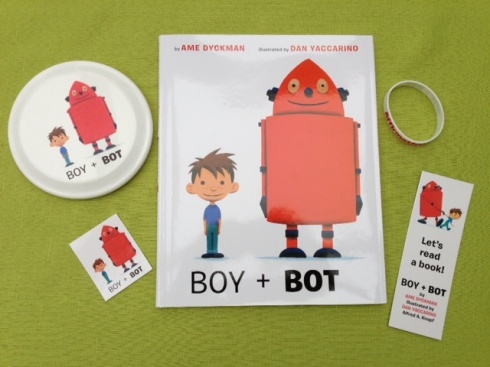
Ame is giving away a signed copy of BOY + BOT plus SWAG—bookmark, sticker, “Affirmative!” bracelet and mini Frisbee! Comment on this post AND complete the challenge to be entered (you’ll be asked to take the “PiBo Pledge” on December 1st to verify you have 30 ideas). A winner will be randomly selected in early December. Good luck!


 In past PiBoIdMo posts, I’ve encouraged you to…
In past PiBoIdMo posts, I’ve encouraged you to…
This time around, I want to focus on structure.
Just like houses and dinosaurs, every story needs an underlying framework.


Most of my books follow the Classic Picture Book Structure:
- MC has a problem
- MC faces obstacles that escalate
- MC encounters a black moment in which things can’t possibly get any worse
- MC figures out how to solve the problem
- MC grows/changes by the book’s end
My latest book, PRINCESS IN TRAINING, is an example of this.
Behold!
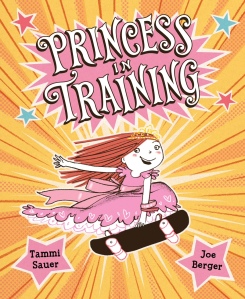
Princess Viola is great at skateboarding and karate-chopping, but she’s lousy at the royal wave, walk, and waltz. The king and queen are not pleased. What’s a princess to do? Attend the skill-polishing Camp Princess, of course. In the end, it’s a good thing Viola is made of tougher stuff. Who else will save the day when a hungry dragon shows up?
This is how the Classic Picture Book Structure works with PRINCESS IN TRAINING:
- Princess Viola Louise Hassenfeffer has a royal problem. She is not an ordinary princess and the kingdom is unhappy about it.
- Princess Viola faces three obstacles at Camp Princess (she is unable to properly master the royal wave, royal fashions, and royal dancing).
- A hungry dragon shows up at Camp Princess.
- Princess Viola uses her unique skill set to save the day.
- Princess Viola may not be an ordinary princess, but she is deemed the darling of her kingdom anyway.
Although the Classic Picture Book Structure is my super-favorite way to frame a story, there are a variety of other options. Below are many of them along with some examples.
Circular:
The story’s ending leads back to the beginning
If You Give a Mouse a Cookie; When a Dragon Moves In
Concept:
The story focuses on a single topic or category
All the World; Kindergarten Rocks; Hello Baby!
Cumulative:
Each time a new event occurs, the previous events in the story are repeated
My Little Sister Ate One Hare; I Know an Old Lady Who Swallowed a Fly
Mirror:
The second half of a story echoes what occurred in the first half of the story
Old Bear and His Cub; Boy + Bot; A Sick Day for Amos McGee
Parallel:
Two storylines are taking place at the same time
The Dog Who Belonged to No One; Meanwhile Back at the Ranch
Reversal:
Character and/or plot is portrayed in a way that is opposite from the norm
Bedtime for Mommy; Children Make Terrible Pets; Little Hoot
This month, I’m challenging myself to come up with at least one story idea for each of those frameworks. C’mon, groovy PiBoIdMo people. Who’s with me?
Tammi Sauer has five picture books debuting in 2012: Me Want Pet!, illustrated by Bob Shea (Paula Wiseman/S&S); Bawk & Roll, illustrated by Dan Santat (Sterling); Oh, Nuts!, illustrated by Dan Krall (Bloomsbury); Princess in Training, illustrated by Joe Berger (Houghton Mifflin Harcourt); The Twelve Days of Christmas in Oklahoma, illustrated by Victoria Hutto (Sterling). She recently sold two books at auction to Houghton Mifflin Harcourt. The idea for one of those books—The Farm that Mac Built—sprang from her 2011 PiBoIdMo Idea List. It has a cumulative structure. Ooh.


And another “ooh” for you: there’s a PRINCESS IN TRAINING prize pack waiting for a lucky PiBoIdMo’er who completes the 30-ideas-in-30-days challenge. Comment on this post AND complete the challenge to be entered (you’ll be asked to take the “PiBo Pledge” on December 1st to verify you have 30 ideas). A winner will be randomly selected in early December. Good luck!


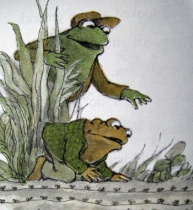 “NOW SEEDS, START GROWING!”
“NOW SEEDS, START GROWING!”
Frog came running up the path.
“What is all this noise?” he asked.
“My seeds will not grow,” said Toad.
“You are shouting too much,” said Frog. “These poor seeds are afraid to grow.”
“These poor seeds are afraid to grow.” Wait… seeds can be afraid to grow? I didn’t know that. I wonder if that is my problem. Are you talking to me too, Frog? Can stories be afraid to grow, too?
Maybe I am shouting too much: Now ideas, start GROWING—what will the critique buddies think? what will mr. agent, ms. editor think? what will bookstores, kirkus, random readers on goodreads think? what if I never, never have a good idea again? OMG! that really could happen! please, please, ideas—GROW, GROW, GROW!
Help—TOAD—I can’t stop the shouting! Where are you? What would YOU do?
Toad read a long story to his seeds.
All the next day Toad sang songs to his seeds.
And all the next day Toad read poems to his seeds.
And all the next day Toad played music for his seeds.
Then Toad felt very tired, and he fell asleep.
Oh! These all sound like easy things to do… thank you Toad, I will do them! I will read stories and poems and play music. And then maybe I will also look at art, and walk in the woods and stop on the footbridge to play Poohsticks. And then plant things, bake things, make things… make anything but books.

And then finally, I will lie on the couch and stare out the window, until… until there is no more shouting and it is quiet… except for some birds (what’s the gossip today, guys?), and a couple of squirrels (hey, what is the problem out there? stop bickering!), and my cat, Milo, snoring.
I will try all of these things because I have read, and read over many times again, FROG AND TOAD TOGETHER by Arnold Lobel, so I know that in “The Garden”—spoiler alert!!!—once Toad stops shouting, his seeds really do grow in the end. Hopefully, if I’m quiet and patient too, my ideas will stop being afraid to sprout, and if I have a good one—hooray!!—I will jot or sketch it down right away. And then, at last, I can reward myself by taking a lesson from the next chapter of Frog and Toad: “Cookies”.
 Toad baked some cookies.
Toad baked some cookies.
“These cookies smell very good,” said Toad.
He ate one.
“And they taste even better…”
Hey, did you have an idea today? Well then, have a cookie! And by the way, what do you do, to coax your ideas to grow?
Once-upon-a-time, Deborah Freedman was an architect, but now she prefers to build worlds in books. She is the author and illustrator of SCRIBBLE and BLUE CHICKEN, and THE STORY OF FISH AND SNAIL, to be published in June 2013, by Viking. Follow her adventures at Writes With Pictures or on Facebook and Twitter @DeborahFreedman.
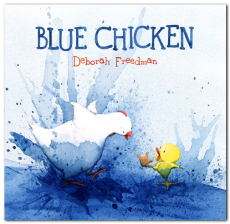 And lucky you, it’s time to win something AGAIN! Deborah is giving away a signed copy of her book BLUE CHICKEN!
And lucky you, it’s time to win something AGAIN! Deborah is giving away a signed copy of her book BLUE CHICKEN!
Just comment to be entered (one comment per person).
A winner will be randomly selected in one week.
Good luck!


 About two and a half months ago I decided I was going to start running. I had a few reasons for this decision;
About two and a half months ago I decided I was going to start running. I had a few reasons for this decision;
- I was getting fat.
- I didn’t feel great about the way I looked.
- I had seen one too many pictures of myself at various author events from weird angles with more than one chin.
So I bought some cheap running shoes and decided to start running when my kids went back to school after summer break. Keep in mind that I’ve never been a runner. Not when I was a kid, not in high school, not ever. I’d see people running down the street and think that they were crazy. Running was never something that wanted to do but I was determined to give it a try.
My kids started school on August 14th and, as planned, I started running. I use the term “running” very loosely here as I was doing more walking than running. I would run as far as I could until my lungs were screaming and my legs were burning and then walk. Run. Walk. Run. Walk. Rinse and repeat. On and on until I had completed thirty minutes. (Around two miles.) At the end of my first run/walk I was pretty sure that I was going to die. My legs were sore and throbbing but I had taken the first step towards a leaner, happier me.
The next day I woke up with sore legs but I still went out running. Run. Walk. Run. Walk. At this point I had no idea that I was supposed to take days off between runs. (This was all new to me.) I was determined to stick to my new goal regardless of the pain. So I hobbled along running and walking for two weeks straight with only the weekends off to rest.
After two weeks of running I reached a point where my legs were super sore. I could barely sleep at night. I knew I needed to take some time off to let my muscles recover. The funny thing is that I didn’t want to take a break. Even with my legs screaming for relief I loved running. I loved being outside listening to the music on my iPod and I felt really great emotionally. I had a deep sense of accomplishment and I was starting to see some results when I got on the scale. But I knew if I wanted to keep running I’d have to take some time off and let my legs recover.
Lucky for my legs I had a six-day book tour of San Francisco the following week. It would be the perfect time for a break.

When I returned from San Francisco I jumped right back into running. My legs felt better but it wasn’t long before they began to hurt again. After some online research and talking to friends who run I came to the conclusion that maybe it was my shoes. So I went to my local running store and twenty minutes later I left with the most expensive pair of shoes that I’d ever bought in my life. The salesman said that they would help absorb some of the impact and give my legs more support. The next day I took the shoes out for a test run and they worked. My legs weren’t near as sore as they had been previously. Success!
At this point I’d been at it for about a month. My legs weren’t hurting quite as bad as before but they were still a little sore. I did a little more research and discovered that it’s a good idea to do some cross training between running workouts. So I dusted the cobwebs off my ten-year-old mountain bike and hit the bike trail. Riding my bike between running workouts made a huge deference. It gave my legs a day between runs to recover and I was still able to get in a good workout every day.
I really had no idea what I was doing when I started this whole running thing. I just figured it out as I went. The important thing for me was to just keep at it. To make myself get out of bed every day and either run or bike. It didn’t matter how fast I went, it only mattered that I was doing it everyday or almost every day. I would after all take the occasional day off to rest or to sleep in. I hadn’t completely lost my mind.
The funny thing is that the more I worked out, the better I felt, and the better I felt the further I pushed myself to go. I went from running short spurts and walking, to running three to five miles at a time without stopping. I started biking 18 miles on my bike and I felt amazing. Now, every day I go out and I challenge myself to go a little further or a little faster. I go to bed at night looking forward to getting up the next morning and running or biking. It’s crazy. It’s been two and half months since I started and I feel happier and less stressed than ever before. Oh, and I’ve lost twelve pounds and counting. No more extra chins.
Some of you reading this may be asking yourself at this point, “What does this have to do with writing picture books?” Good question. Here’s the thing, no matter what you want to do in life it all starts by taking a step. A single step.
That step may be taking a class or starting to draw, or in my case starting to run. It can be anything. You just have to take the step. The more steps you take the easier it will get. Along the way you may step in a puddle or two, or get injured (rejected) and that’s okay. Just take some time off to clean yourself up and recoup.
Then when you’re ready, take another step, and another. After a while your steps will get faster and a lot easier, and before you know it you’ll be running. You’ll be pushing yourself to go further and you will be feeling better. You’ll be happier. Who knows, maybe some day you’ll even run a marathon or two. All you have to do is just keep running.
James Burks started out working as an artist in the animation industry for various studios including Disney, Warner Brothers, and Nickelodeon. Projects he has worked on include the Emperor’s New Groove, Atlantis, Treasure Planet, Home on the Range, Space Jam, the Iron Giant and the television shows Wow Wow Wubbzy, Ni-hao Kai-lan, the Dinosaur Train and Fan Boy and Chum Chum.
He currently spends his days taking care of his two kids, running/biking and writing/illustrating his own books. His first graphic novel for kids, GABBY AND GATOR, published by Yen Press, was a Junior Library Guild selection and a 2012 CTA Read Across America title. He also has a picture book with Carolrhoda entitled BEEP AND BAH, a graphic novel with Scholastic/Graphix called BIRD AND SQUIRREL ON THE RUN, and he just finished illustrating a book for Simon & Schuster called THE MONSTORE written by Tara Lazar which will be out in June 2013.

James is giving away a signed digital print of this friendly witch and best friend. It sure is as sweet as Halloween candy!
Just comment to be entered into the drawing (one comment per person).
A winner will be randomly selected in one week.
Good luck!


 I’d like to share with you a little something I’m going to call “the sidle-up effect.” Here’s how it happens.
I’d like to share with you a little something I’m going to call “the sidle-up effect.” Here’s how it happens.
I’m outside having a picnic with my family, including two rambunctious little boys, E and O. Editor that I am, I’m excited to give them a “haven’t seen you guys in a while” present. It’s a book.
Now, this book happens to be a particular new favorite of mine: THE OBSTINATE PEN by Frank Dormer. However, it’s a beautiful day, we’re in the park, and I’m up against some formidable opponents: scooters, sticks, dirt, and peanut butter & jelly. As you can imagine, despite two extremely polite thank you’s, this gift does not receive the desired effect of elation and awe.
Well, fine. I should have anticipated this. But I still want to show this story a little love. So I sit down and begin to read the book aloud to myself. “Uncle Flood unwrapped his new pen and laid it on the desk…”
Barely perceptibly at first, the effect starts to take effect. First comes the quiet patter of sticks dropping to the ground. Then the faint squeak of scooter wheels coming to a halt. Next, two small figures edge into my peripheral vision. And then, all of the sudden, as I approach the part where the pen sticks to the wheel of Mrs. Norkham Pigeon-Smythe’s automobile, O is in my lap, and E is draped uncomfortably over my shoulders.
We proceed to read the book four more times.
I love enthusiastic young readers as much as the next editor/agent/writer/illustrator/reader/person (and for their mother’s sake, I should add that E and O are among that group—I just caught them on an afternoon ripe with distractions). But if a book promises to both captivate the eager crowd and achieve the sidle-up effect among the more stick-and-dirt-inclined, that book is an automatic winner to me.
 THE OBSTINATE PEN is the perfect example of such a winner because it has something for everyone. It’s wildly creative and uproariously funny. It features dimwitted adults and a shrewd, worldly young hero. And it’s totally unique: it makes me think, “Now how in the world did he come up with that?”
THE OBSTINATE PEN is the perfect example of such a winner because it has something for everyone. It’s wildly creative and uproariously funny. It features dimwitted adults and a shrewd, worldly young hero. And it’s totally unique: it makes me think, “Now how in the world did he come up with that?”
The books that wow editors are the books that bring something new to the table—that wriggle their way into your head so you can’t stop thinking about them for days. You might grab my attention with a real and endearing character; striking, lyrical language; a hilariously honest voice.
Maybe it’s a creative, fiery little girl who brings the spark to a classic tale of friendship, like Kelly DiPucchio’s CRAFTY CHLOE. Or a text so simple, beautiful and poetic that it leaves room for a whole new world to unfold in the illustrations, like Mary Lyn Ray’s STARS (illustrated by Marla Frazee). Or a soft song about eggs filled with so much personality (“I do not like the way you slide, / I do not like your soft inside, / I do not like you lots of ways, / And I could do for many days / Without eggs”) that it sticks with you straight through from childhood to adulthood, like Russell Hoban’s BREAD AND JAM FOR FRANCES. Ok, maybe that last example is a little specific, but you get the gist (it’s one of my all-time favorites).
And maybe it’s because I work in children’s publishing, but in my opinion, there’s nothing in the world that sticks with you like a picture book. Think about your favorite book when you were little. Why do you still remember it? The most special of special characters, voices, stories—they all contribute to this warm little nugget of childhood that you’ll carry around with you forever. You can’t create that by hitching a ride on the big, flashy, commercial, book-selling train of the moment. You create that by pulling your inspiration directly from that spot, by reigniting that spark from your childhood and writing from your heart.
As an editor, I’m looking for a picture book that I want to sidle up to. One that, if you caught me playing with sticks in the park, would have me—well, maybe not in your lap, but at least draped uncomfortably over your shoulders.
Achieve that, and I promise you, those sticks won’t stand a chance.
Emma Ledbetter is an editorial assistant at Atheneum Books for Young Readers, an imprint of Simon & Schuster. She sidles up to picture books, chapter books, and middle grade novels with fresh, sincere voices, humor and heart. Upcoming projects she has edited include THE BACKWARDS BIRTHDAY PARTY, a picture book by John Forster and legendary singer/songwriter Tom Chapin, and the fantastically wacky middle grade novel THE CONTAGIOUS COLORS OF MUMPLEY MIDDLE SCHOOL by Fowler DeWitt. Follow her on Twitter @brdnjamforemma.
Emma will be donating a picture book critique to a lucky PiBoIdMo participant who completes the 30-ideas-in-30-days challenge. A winner will be randomly selected in early December.


 I can’t believe it’s already November! PiBoIdMo, 12X12 and Picture Book Month are all in full swing, proving that the venerable picture book has merit and value. It is because of because of you, writers and lovers of picture books, that we have reason to celebrate! So I begin this post with a thank you. Thank you for your passion and commitment to picture books.
I can’t believe it’s already November! PiBoIdMo, 12X12 and Picture Book Month are all in full swing, proving that the venerable picture book has merit and value. It is because of because of you, writers and lovers of picture books, that we have reason to celebrate! So I begin this post with a thank you. Thank you for your passion and commitment to picture books.
Now on to the subject of my post. The Space Between. It sounds like some ethereal place that might exist in a Lois Lowry book but it is a very real place that exists, especially in picture books. Joe Wos, a friend who is a cartoonist and curator of the Toonseum in Pittsburgh, Pennsyvania, once taught me about “the space between” in comic strips. It’s that blank space that exists in between each comic box. What is so important about The Space Between are not the words before and after it, but the words and actions that are left unsaid.
I thought about it. As writers, we all rely on The Space Between without even realizing it. In novels, you’ll see two passages divided by a set of asterisks. The moment you see it, you know moments, actions, and words have passed, all shrouded in The Space Between. The writer leaves it up to you to decipher what happens between one scene and the next. The device is also used in movies. Movement from scene to scene relies on The Space Between to create a smooth transition.
So how does this fit into writing picture books? For picture book writers, The Space Between is the page turn. It is the breath or the pause between pages. It can be dramatic and full of suspense, ushering the next bit of action in the book. Eric Litwin’s New York Times best-selling book, Pete the Cat does this so brilliantly that listening audiences automatically chime in the answer when the page is turned.
The Space Between can also be subtle and gentle. In the nearly wordless picture book, Goodnight Gorilla by Peggy Rathman, the device is used ingeniously. The Space Betweeen becomes the thread that ties every scene together, creating a story so seamless, you don’t even notice what is not shown. On one page, the zookeeper’s wife wakes up. On the next page, she is on the lawn, walking the animals back to the zoo. What happens in between needs no explication.
The Space Between can also be intentional. Stories that are poems have a natural break between stanzas such as those in Dr. Seuss books. In the book, Z is for Moose by Kelly Bingham and illustrated by Paul O. Zelinsky, The Space Between is used to create deliberate tension. Moose vies for a spot in the alphabet and Zebra is the referee trying to corral Moose and keep him from ruining the procession of letters. At one point, Zebra says, “No! Now, move off the page.” The page turn reveals whether or not Moose moves and what his next antics might be.
The next time you are reading or writing a picture book, think about The Space Between. Think about the words and actions you commit to paper as well as the ones you don’t. Think about that pause, the breath that is the page turn. What does your “space between” say?
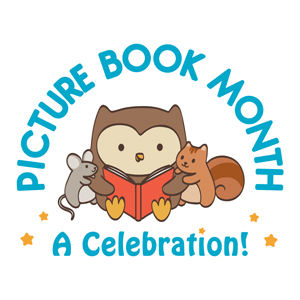
November is Picture Book Month. Read * Share * Celebrate!
 Dianne de Las Casas is an award-winning author, storyteller, and founder of Picture Book Month, who tours internationally presenting author visit/storytelling programs, educator/librarian training, and workshops. Her performances, dubbed “revved-up storytelling” are full of energetic audience participation. The author of twenty books, her children’s titles include The Cajun Cornbread Boy, Madame Poulet & Monsieur Roach, Mama’s Bayou, The Gigantic Sweet Potato, There’s a Dragon in the Library, The House That Witchy Built, Blue Frog: The Legend of Chocolate, Dinosaur Mardi Gras, Beware, Beware of the Big Bad Bear, and The Little “Read” Hen. Visit her website at diannedelascasas.com. Visit Picture Book Month at picturebookmonth.com.
Dianne de Las Casas is an award-winning author, storyteller, and founder of Picture Book Month, who tours internationally presenting author visit/storytelling programs, educator/librarian training, and workshops. Her performances, dubbed “revved-up storytelling” are full of energetic audience participation. The author of twenty books, her children’s titles include The Cajun Cornbread Boy, Madame Poulet & Monsieur Roach, Mama’s Bayou, The Gigantic Sweet Potato, There’s a Dragon in the Library, The House That Witchy Built, Blue Frog: The Legend of Chocolate, Dinosaur Mardi Gras, Beware, Beware of the Big Bad Bear, and The Little “Read” Hen. Visit her website at diannedelascasas.com. Visit Picture Book Month at picturebookmonth.com.



For me, it all starts with accepting the sad truth that I have no idea what I’m doing. I’ve published a handful of books over an armload of years and I still haven’t a clue how to write or draw anything approximating a viable picture book. None. When you’re as lost as me, a step in any direction is a total stab in the dark.
The second thing I try to remember after accepting being completely lost is that, much to my eternal chagrin, I will never write or draw like William Steig or Arnold Lobel or Esphyr Slobodkina or Rosemary Wells or Leo Lionni or Tove Jansson or Roger Duvoisin or Lane Smith or Ellen Raskin or you or my six-year-old daughter or anyone. Trying to write or draw like someone else makes me feel not only lost, but hopelessly lost. Hopelessly lost is the worst kind of lost.
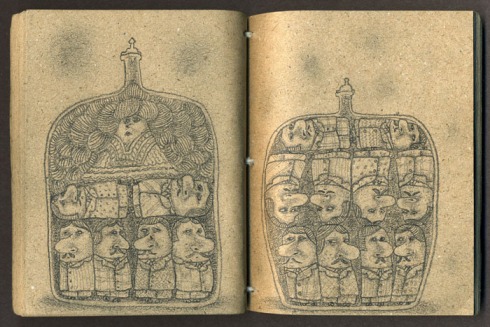
When I’ve dispensed with the formalities of pretending to know what I’m doing or that I will ever successfully pull off being anyone other than me, I take out my pencils and a current favorite pad and let the only brain I will ever have tell me what it’s thinking. It has been chewing over bottles for years. And people in bottles. And mulling over hairdos of late. And mustaches. And mermaids with mustaches and hairdos. And seaweed. And tubeworms. And coral. And deep-sea hydrothermal vents. I have no idea how to draw deep-sea hydrothermal vents. And sunken treasure chests. And gumball machines. And balloon vendors. And people with no arms who don’t seem to care that they have no arms because they are stuck in bottles. And that we never have enough cookies in the house. Or enough batteries. Cookies and batteries and toilet paper should just regenerate themselves before you’ve had the misfortune to realize you’re out of them….but they never do, do they?

It’s generally easier to see when someone else is lost. Or when someone else is trying to write or draw like someone other than themselves. Or when someone else is having fun. It is harder to see yourself having fun because the very act of seeing yourself do so takes you out of the experience of having the fun you were having before you went ahead and ruined it by having a meta moment about what you were doing. Which is no longer having fun. It is thinking about having fun. Which is not as fun…no matter what you think. It just isn’t.

For me, the key to embracing my lostness, in the not-hopeless fun-having way I try to embrace being lost, is by trying to be present. What does that mean? I’m not entirely sure. It think it feels like not worrying about which direction I’m going because there is nowhere else but here. Where the skin ends and the scales start or a tail now curves or shells start gathering on the sea floor. It feels like not worrying about being as funny or wise or poetic or brave or dexterous as anyone else. It means not realizing that the last Oreo disappearing in my greedy maw at this very moment is the very last delicious thing in the ENTIRE HOUSE.

It doesn’t matter. I’m drawing scalloped-shell mermaid brassieres. Or merrily tracing chest hair. Or bottling the moon. Or realizing I can also draw with the green fountain pen I’ve previously been afraid to use. Even the red one. Yes…THE RED ONE! There is no one telling me I can’t use the green or red pens other than me, is there? They’re my pens for god’s sake. When was a “Pencils Only Rule” ever voted in as a Constitutional Amendment? There is no federal mandate forcing me to draw my characters in profile either (wait…there isn’t?). And congress has yet to make me learn foreshortening. Or write about things I don’t want to draw in profile…or foreshorten.
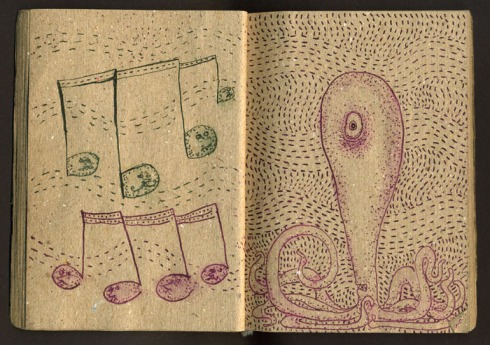
Life, Liberty and the Pursuit of Front-View Happiness! Woo hoo. Look at me. No hands. No clue where I’m going. I’ve got all of later today and tomorrow and the rest of my life to work up a healthy froth over not knowing how the heck I’m going to turn anyof this flotsam into a book or that the flashlight in the “emergency drawer” doesn’t work. Right now not even Theodore Geisel could be having more fun than me.

Fun…and regenerative toilet paper…and C batteries… and fresh Oreos… and mermaid bras… and chest hair… that’s just what the doctor ordered!
There are much more potent prescriptions out there. I’ve read them here on PiBoIdMo. It’s sick how smart and generous and talented you people are. And by sick I mean inspiring. I may be incurably lost, but I know enough to leave the dispensing of real medical advice to those of you who actually know what you’re doing. I’m a fruit-flavored chewable guy. If it tastes too bitter going down, I can’t ask you to swallow it either.

Learn more about the inexplicably incomparable (Tara’s description) Robert Weinstock and his books (like I’M NOT and FOOD HATES YOU, TOO!) at his website, CallMeBob.com.


 I have always been competitive. Maybe it’s because I have 4 sisters and 2 brothers, which meant we did things like thumb-wrestle to see who would get the last bowl of Sunday Cereal…or battle it out in Easter Day relay races that required rolling eggs across the carpet with our noses. Or maybe it’s because my parents fell in love on the basketball court, where everyone said that if Patty really liked Harold, she would let him win. Well, she really did like him. Forty-years-together-and-counting-kind-of-liked-him. But she didn’t let him win. So I guess you could say it’s in my blood.
I have always been competitive. Maybe it’s because I have 4 sisters and 2 brothers, which meant we did things like thumb-wrestle to see who would get the last bowl of Sunday Cereal…or battle it out in Easter Day relay races that required rolling eggs across the carpet with our noses. Or maybe it’s because my parents fell in love on the basketball court, where everyone said that if Patty really liked Harold, she would let him win. Well, she really did like him. Forty-years-together-and-counting-kind-of-liked-him. But she didn’t let him win. So I guess you could say it’s in my blood.
Is it any wonder then that I jumped at the chance to be a part of PiBoIdMo when I first heard about it in 2010? A challenge, you say? 30 ideas in 30 days, you say? Sounds hard. I’m in!
Know what else sounds hard? Marathons. Lucky for me, November is a month chock-full of ‘em, and I’ve got a husband who likes to run ‘em. (I’ve run a half-marathon, and that was hard enough for me, thank you very much!) So when November 5, 2010 rolled around, this is the idea I wrote down:
Marathon Mouse. Story of a mouse who lives in NYC right under the start line and decides that it is his life’s dream to participate in the NYC marathon.
What I quickly figured out about PiBoIdMo was that it wasn’t necessarily coming up with the ideas that was the hard part. But the sifting and sorting of ideas to figure out which were studs and which were duds??? That was the tough part. Once the challenge was over, I tried writing a couple of other stories first…ones that I deemed more commercial, more worthy of an agent’s or editor’s attention. But I soon realized that the story I really wanted to write was the one about the marathon. In the 2 years since my husband had taken up distance running, I had been in search of a picture book about the sport that I could share with my children. I was looking for something that reflected the early mornings, the intense training, and the roadside cheering that was now a part of our family culture. And I couldn’t find one, because one didn’t exist.
 So I wrote it.
So I wrote it.
And I liked it.
It travelled with me to my critique group, as well as to our regional SCBWI conference. And it was there that I first heard the objection that followed this manuscript around for quite some time: “…but kids don’t run marathons!” Okay, fair point. Kids don’t run marathons.
BUT.
Anyone who has ever been to a marathon knows that you will find yourself absolutely, without exception, knee-deep in kids…walking the course, holding cherished homemade signs, and searching the crowds of runners, hoping to catch a glimpse of their mom or dad, aunt or grandpa, teacher or friend. Kids may not run marathons, but they are an ever-present part of the running community. And that was the reason that I persevered through 26.2 miles of discouragement, and believed in my story.
Mercifully, there was an editor out there from Sky Pony Press who believed in my story too. And now I have had the wonderful privilege of experiencing my children’s delight as they turn the pages of Marathon Mouse…because, although they have never actually run a marathon, it is in those pages that they see their experiences reflected. And they love it.
Write the stories that you want to write. As the ideas fly off your fingertips and onto that spreadsheet this November, make note of the ones that spark something in your heart. They may not always be the obvious choices. They may not always scream commercial appeal. But one of them just might be the story you were meant to write.
And now if you’ll excuse me, it’s day one of PiBoIdMo, and I’ve got an idea for a story about a girl named Patty…and a boy named Harold…and the jump shot that launched an unending love…
 Amy Dixon grew up as one of seven siblings, so the only peace and quiet she ever got was inside a book. Once she had her own kids, she rediscovered her love for picture books at the public library. It was the one place she knew all four of her kids would be happy . . . and quiet. She writes from her home, where she lives with her four little inspirations and her marathon-running husband, Rob. Check her out at amydixonbooks.com.
Amy Dixon grew up as one of seven siblings, so the only peace and quiet she ever got was inside a book. Once she had her own kids, she rediscovered her love for picture books at the public library. It was the one place she knew all four of her kids would be happy . . . and quiet. She writes from her home, where she lives with her four little inspirations and her marathon-running husband, Rob. Check her out at amydixonbooks.com.


 Everyone has their own notion of what a picture book is. Lots of illustrations, lots of color. And, of course, lots of smiling happy kids reading (usually in front of a fireplace on a snowy winter afternoon, drinking hot chocolate while the chocolate lab snores…ok, maybe that’s just me).
Everyone has their own notion of what a picture book is. Lots of illustrations, lots of color. And, of course, lots of smiling happy kids reading (usually in front of a fireplace on a snowy winter afternoon, drinking hot chocolate while the chocolate lab snores…ok, maybe that’s just me).
Scary and creepy? Not so much.
But, as today is Halloween, it’s time to look at the darker side of the picture book. Amazon has 369 results for ‘scary picture book’ with 35 of them rated for ages 0-2. Yes, 0-2! Another 169 are for ages 3-5. Picture books! Scary ones! Now, of course, the scares aren’t quite what you’ll find for an older reader but everything from monsters (THE MONSTORE, for example…with a tip of the blogging cap to my host, Tara Lazar) to ghosts (A VERY SCARY GHOST STORY) and even mummies (Yes, mummies: WHERE’S MY MUMMY?) have been appearing in picture books for decades now and it’s long past time to appreciate the scary and creepy!


Hopefully no one is now picturing Twilight For Toddlers (I’d trademark that but…no) but there is, indeed, a market for picture books that may not be as light and fluffy as the rest. With 30 days in the upcoming PiBoIdMo, you might want to spend a day or two brainstorming towards the darker end of the spectrum. The goal of the creepier picture books obviously isn’t to scare a child, but to introduce them to the shadows in a fun, friendly way, making the frightening familiar and, therefore, safe.
Spend a day of PiBoIdMo remembering your own childhood, those nights when the last thing you did at night was to ask your mom or dad to leave the hall light on, or to lay down with you for a moment or two, or to look in the closet or under the bed in a ritual game to drive away the monsters. Those are memories that generations share, we all were children once, wanting that light on…and, as we read to our own children, we share those moments with them so that they’ll have similar memories.
Writing a scary or creepy picture book for children is much like that hall light, scaring away the monsters under the bed or the ghosts in the attic or the witch in the closet with pictures and words. For the next 30 days, as you try to generate ideas for PiBoIdMo, don’t be afraid of the shadows, instead use them to create puppets on the walls of your imagination…the world needs more scary and creepy picture books.
No sparkly vampires, please. Well, actually, now that I think about it…
 Peter Adam Salomon graduated Emory University in Atlanta, GA with a BA in Theater and Film Studies in 1989.
Peter Adam Salomon graduated Emory University in Atlanta, GA with a BA in Theater and Film Studies in 1989.
He has served on the Executive Committee of the Boston and New Orleans chapters of Mensa as the Editor of their monthly newsletters and was also a Judge for the 2006 Savannah Children’s Book Festival Young Writer’s Contest. He is a member of the Society of Children’s Book Writers and Illustrators, the Horror Writers Association and The Authors Guild and is represented by the Erin Murphy Literary Agency. His debut novel, HENRY FRANKS, was published by Flux in September 2012.
Peter lives in Chapel Hill, NC with his wife Anna and their three sons: André Logan, Joshua Kyle and Adin Jeremy.


View Next 6 Posts































 Earlier this week The New York Times published an article discussing how
Earlier this week The New York Times published an article discussing how  Rollins had published her groundbreaking
Rollins had published her groundbreaking 
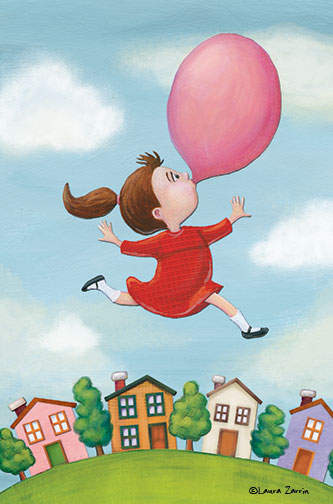
 So, you’ve finished PiBoIdMo, and now you have all these great ideas. You’re on the road to publication!
So, you’ve finished PiBoIdMo, and now you have all these great ideas. You’re on the road to publication!
 When I was a child, I had a reoccurring nightmare. I was on a field trip with my third grade class in a large grassy area with a huge tree in the middle. All the kids were following the teacher across the field and under the shade of the tree. I wasn’t a very popular child, and I was in the tail end of the line.
When I was a child, I had a reoccurring nightmare. I was on a field trip with my third grade class in a large grassy area with a huge tree in the middle. All the kids were following the teacher across the field and under the shade of the tree. I wasn’t a very popular child, and I was in the tail end of the line. You’ve stuck it through November and have a list of 30 ideas. If you have lists like mine, most of the ideas are stinkers. I’ve been doing PiBoIdMo for more than a few years now, and I do see recurrent themes on my lists. Maybe you also have repetitive ideas on your list. No matter. We’re storytellers. Take those ideas and get visual!
You’ve stuck it through November and have a list of 30 ideas. If you have lists like mine, most of the ideas are stinkers. I’ve been doing PiBoIdMo for more than a few years now, and I do see recurrent themes on my lists. Maybe you also have repetitive ideas on your list. No matter. We’re storytellers. Take those ideas and get visual!

 There’s a little stinker that sneaks into my life sometimes and hangs out in the corner of my mind, stealing my creativity.
There’s a little stinker that sneaks into my life sometimes and hangs out in the corner of my mind, stealing my creativity.

 Laura Murray is a children’s author, former teacher, and mom of three mischief makers. Her rhyming picture book,
Laura Murray is a children’s author, former teacher, and mom of three mischief makers. Her rhyming picture book, 
 I’ve often heard people—Publishing Professionals—talk about wanting to “publish books that stand the test of time.”
I’ve often heard people—Publishing Professionals—talk about wanting to “publish books that stand the test of time.”








 People who aren’t directly involved in the publishing industry ask me where I get my ideas from all the time. I’m always tempted to respond with something like, “I steal them from first graders” or “I ask my Ouija board.” I think everyone reading this post knows that ideas come from absolutely everywhere and anything. From the mundane to the downright bizarre, everything is fair game. Consequently, writers are perpetual treasure hunters, the black crows of society.
People who aren’t directly involved in the publishing industry ask me where I get my ideas from all the time. I’m always tempted to respond with something like, “I steal them from first graders” or “I ask my Ouija board.” I think everyone reading this post knows that ideas come from absolutely everywhere and anything. From the mundane to the downright bizarre, everything is fair game. Consequently, writers are perpetual treasure hunters, the black crows of society. Dear fellow PiBoIdMoers: my brave and beautiful sisters & brothers!
Dear fellow PiBoIdMoers: my brave and beautiful sisters & brothers!

 In 2009, I was humming the rejection blues when I spotted Tara’s post on
In 2009, I was humming the rejection blues when I spotted Tara’s post on  “This person has no business being in children’s books.”
“This person has no business being in children’s books.”






 I’m lucky to be good friends with several very important book reviewers.
I’m lucky to be good friends with several very important book reviewers.

 In past PiBoIdMo posts, I’ve encouraged you to…
In past PiBoIdMo posts, I’ve encouraged you to…




 “NOW SEEDS, START GROWING!”
“NOW SEEDS, START GROWING!”
 Toad baked some cookies.
Toad baked some cookies.
 About two and a half months ago I decided I was going to start running. I had a few reasons for this decision;
About two and a half months ago I decided I was going to start running. I had a few reasons for this decision;
 THE OBSTINATE PEN is the perfect example of such a winner because it has something for everyone. It’s wildly creative and uproariously funny. It features dimwitted adults and a shrewd, worldly young hero. And it’s totally unique: it makes me think, “Now how in the world did he come up with that?”
THE OBSTINATE PEN is the perfect example of such a winner because it has something for everyone. It’s wildly creative and uproariously funny. It features dimwitted adults and a shrewd, worldly young hero. And it’s totally unique: it makes me think, “Now how in the world did he come up with that?” I can’t believe it’s already November! PiBoIdMo,
I can’t believe it’s already November! PiBoIdMo, 









 I have always been competitive. Maybe it’s because I have 4 sisters and 2 brothers, which meant we did things like thumb-wrestle to see who would get the last bowl of Sunday Cereal…or battle it out in Easter Day relay races that required rolling eggs across the carpet with our noses. Or maybe it’s because my parents fell in love on the basketball court, where everyone said that if Patty really liked Harold, she would let him win. Well, she really did like him. Forty-years-together-and-counting-kind-of-liked-him. But she didn’t let him win. So I guess you could say it’s in my blood.
I have always been competitive. Maybe it’s because I have 4 sisters and 2 brothers, which meant we did things like thumb-wrestle to see who would get the last bowl of Sunday Cereal…or battle it out in Easter Day relay races that required rolling eggs across the carpet with our noses. Or maybe it’s because my parents fell in love on the basketball court, where everyone said that if Patty really liked Harold, she would let him win. Well, she really did like him. Forty-years-together-and-counting-kind-of-liked-him. But she didn’t let him win. So I guess you could say it’s in my blood. So I wrote it.
So I wrote it.
 Everyone has their own notion of what a picture book is. Lots of illustrations, lots of color. And, of course, lots of smiling happy kids reading (usually in front of a fireplace on a snowy winter afternoon, drinking hot chocolate while the chocolate lab snores…ok, maybe that’s just me).
Everyone has their own notion of what a picture book is. Lots of illustrations, lots of color. And, of course, lots of smiling happy kids reading (usually in front of a fireplace on a snowy winter afternoon, drinking hot chocolate while the chocolate lab snores…ok, maybe that’s just me).


YAY! This is perfect! I just made a hand bound book for my writing group’s grab bag at our holiday party tomorrow. I’m feeling like it doesn’t quite make the cut, but too late to shop now. Thanks Kelly and Tara!
Thanks Kelly and Tara!
Congrats to all of the winners…awesome prizes…generous donors! And to you, Tara, have a beautiful (well-deserved) holiday and a Happy and Healthy New Year! I retire at the end of this year and am looking forward to devoting LOTS of time to polishing up the dozen 12×12 pb drafts I wrote this year and fleshing out the 30 pb ideas in my PiBoIdMo notebook.
Congratulations to all the winners. Tara, I love it that PIBo.. never ends! Have a wonderful, relaxing vacation.
Congratulations everybody! Nice!
Checked my emails before I went to bed last night. What a nice surprise! Thanks, Tara!
Wow! Thanks once again for taking care of this, Tara! Another incentive to keep me going. And thanks again to all those who provided the prizes! Yay!
Woohoo! Congrads everyone. And thanks to all you big-hearted contributors. Especially Tara! Merry Christmas.
Yay to all the winners! And thanks again, Tara, for a another wonderful PiBoIdMo!
Congratulations!
How exciting! Congratulations to all. Merry Christmas, and Tara I hope you have a splendid vacation. Thanks for everything.
Congratulations everyone – and happy holidays!
congratulations to those that won and a happy holiday season to all
Congratulations — one and all!